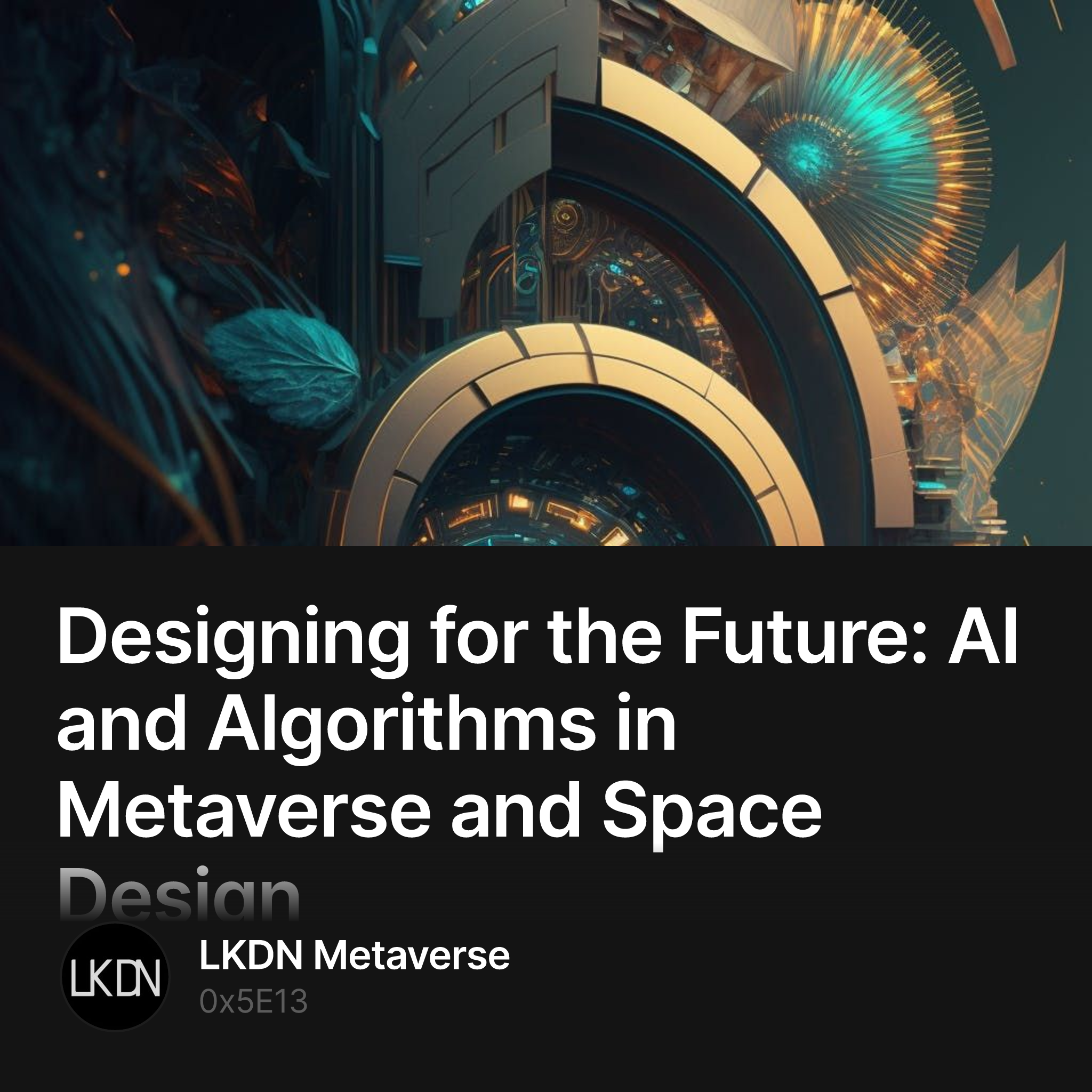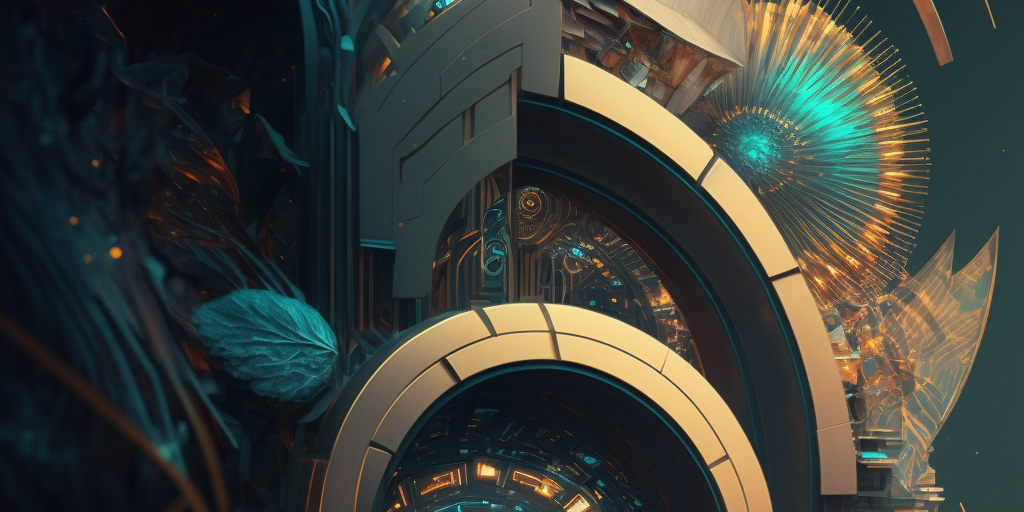My journey into the world of algorithms and digital design has been a fascinating one.
Since I was studying architecture at Architectural Association in London, I started exploring the use of digital tools and software to create complex and intricate structures that would have been impossible to achieve manually on computers.
After finishing my studies, I had the opportunity to work for some of the most innovative architecture firms in the world. I started my career at Zaha Hadid Architects, where I worked as an architectural designer and part of the Zaha Hadid VR group (ZHVR).
At ZHA, I was exposed to cutting-edge technology and design processes, including the use of Virtual Reality to create from scratch and test designs. I had the opportunity to work on some incredible projects, such as the Nanjing Youth Cultural Centre, which showcased the potential of using parametric design and digital tools in the creation of complex structures.
Working at these firms gave me a deep understanding of the value of technology in the field of architecture and design. From the use of Virtual Reality to the creation of custom algorithms, technology has the power to transform the way we approach design and construction.
My experiences at Zaha Hadid Architects and UNStudio inspired me to found my own company, LKDN (https://linktr.ee/lkdn_metaverse) At LKDN, we are able to push the boundaries of digital design and algorithms, creating innovative and sustainable designs that are at the forefront of the industry.
As I continued to experiment with digital design, I became increasingly interested in the application of algorithms in architecture and design. We started incorporating parametric design techniques into our work a while ago, using software like Grasshopper and Rhino to create stunning, dynamic geometries that were not possible with traditional design methods.
For example, we created a series of art pavilion concepts for Shanghai such as the Power Station of Art pavilion that was supposed to be placed in the hall of the museum to serve as a place for local Chinese craftsmen to show and sell their works.
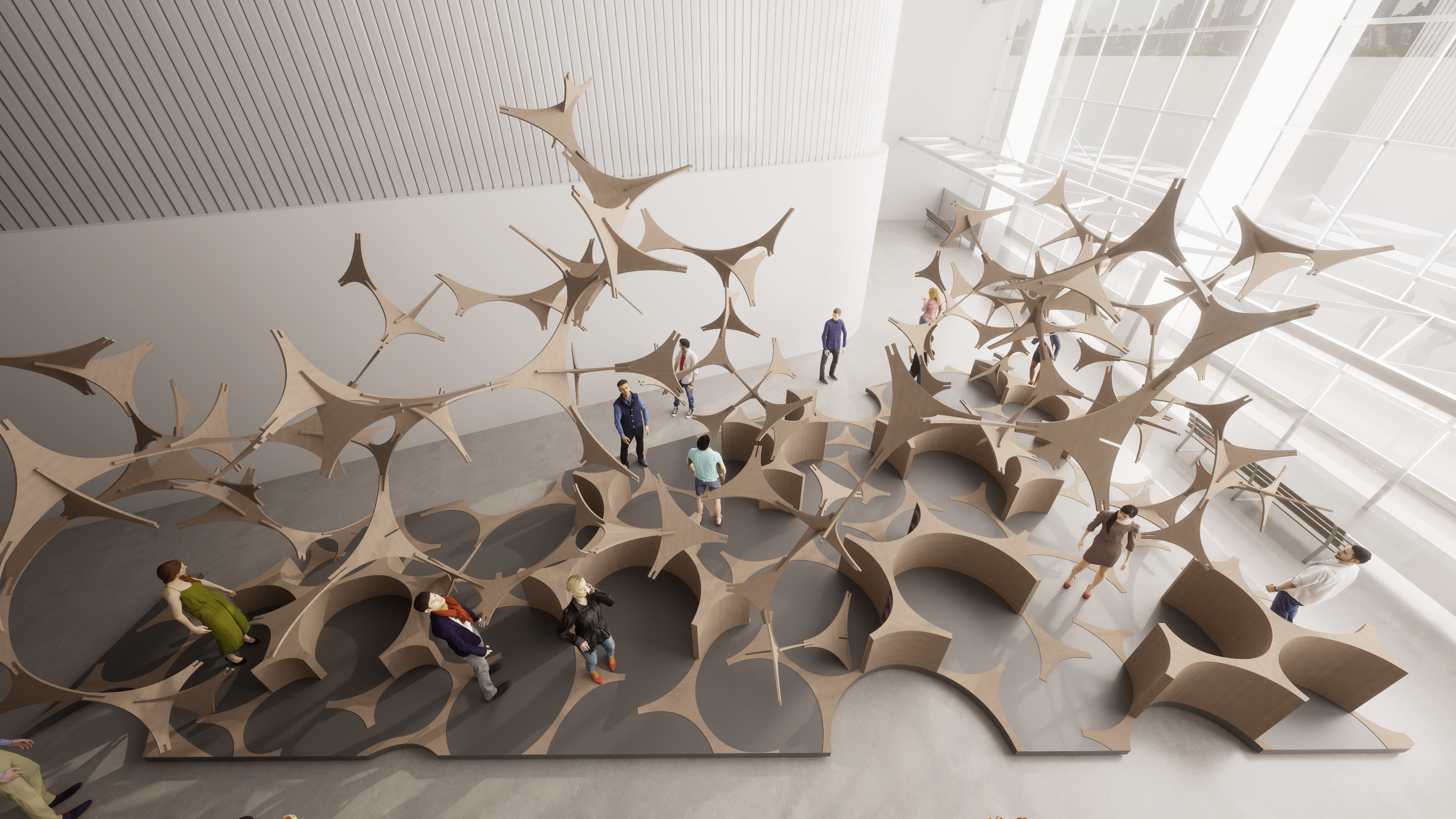
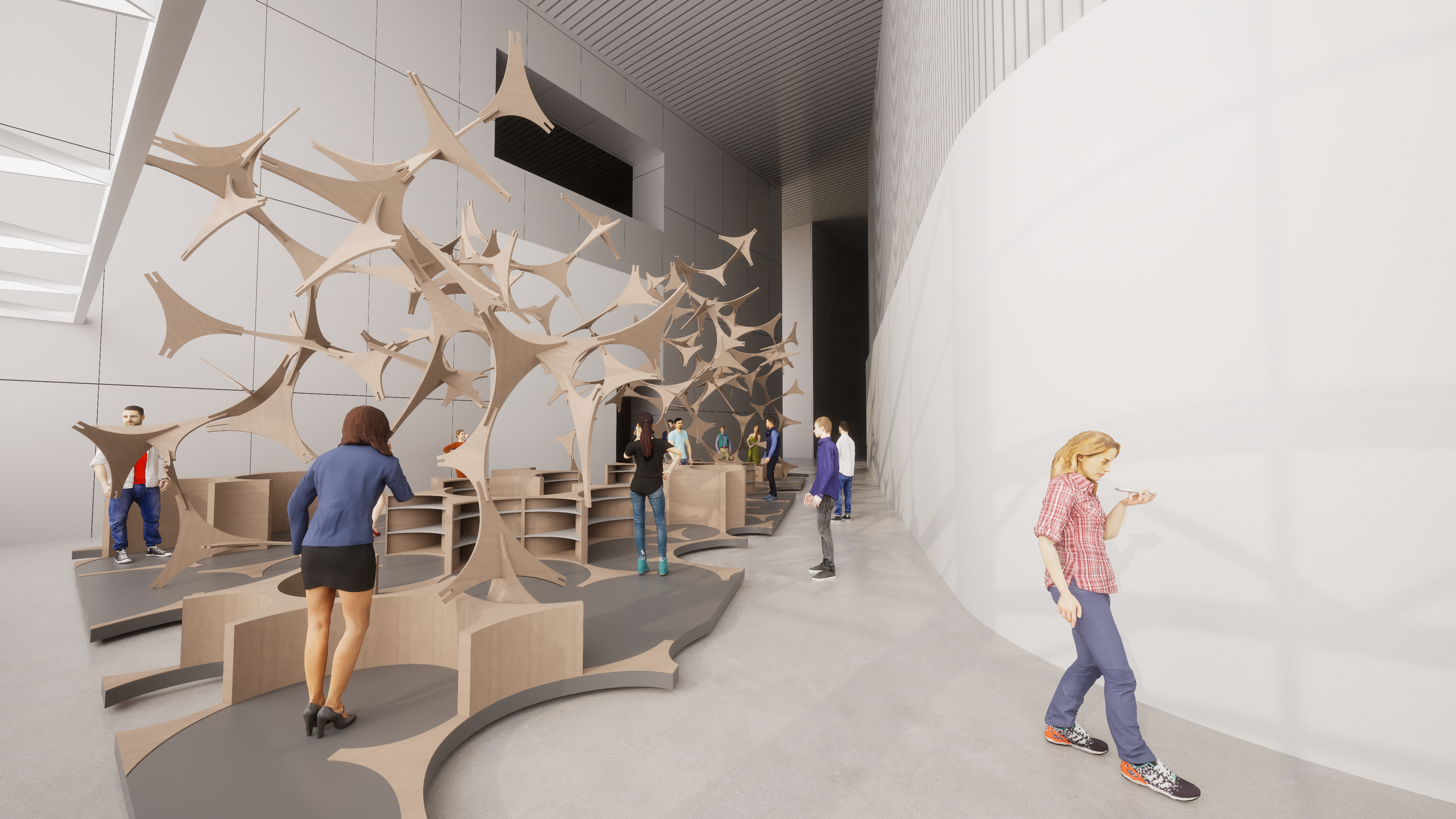

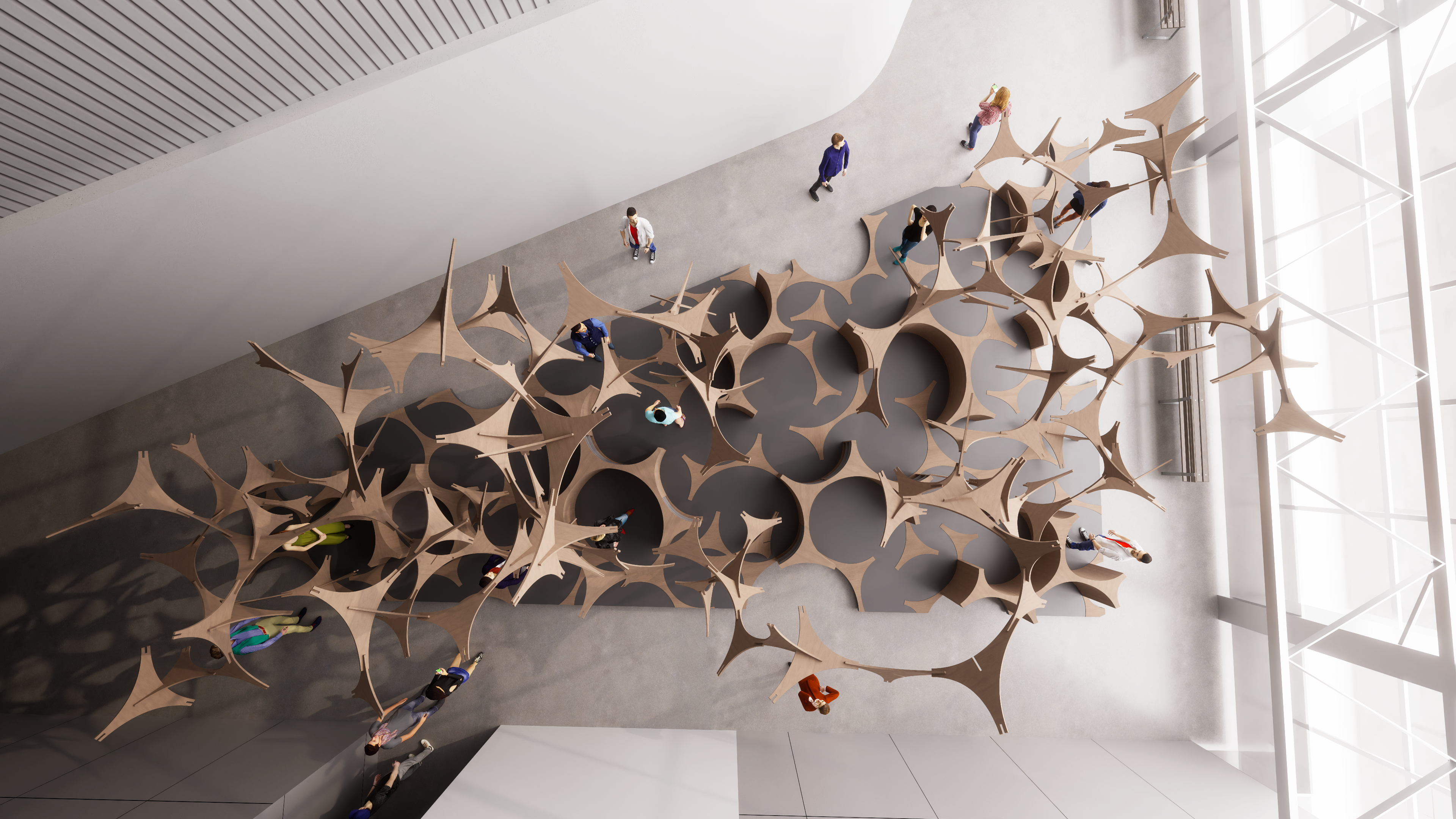
What was interesting about this project is that it was generated suing Swarm algorithm, not by manual modelling on a computer. The Swarm intelligence is often can be found in nature in a form of birds flock behaviour, or school of fish, or social insects. We used the similar logic of behaviour by applying custom-made script by us that could generate using this kind of natural intelligence the form of our pavilion. After the form generation we were able to automate the production of drawings by our custom algorithms to prepare the files for CNC-machine cutting the pieces of plywood to prepare all the pieces, joints, categorise all of them, and number them.
Another fascinating project where we used a different algorithm by us also borrowed from the behaviour in nature is the Curtain Pavilion.
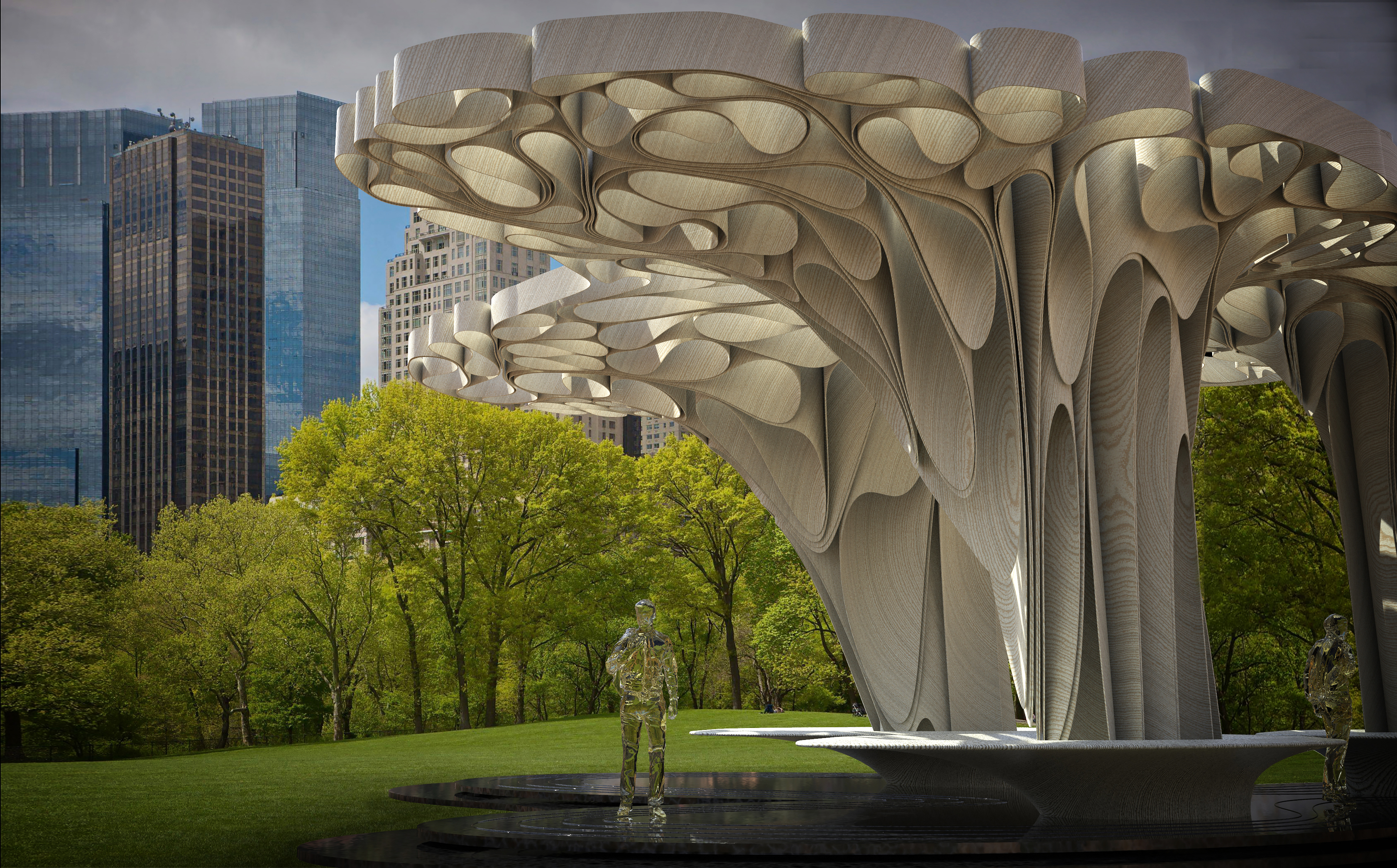

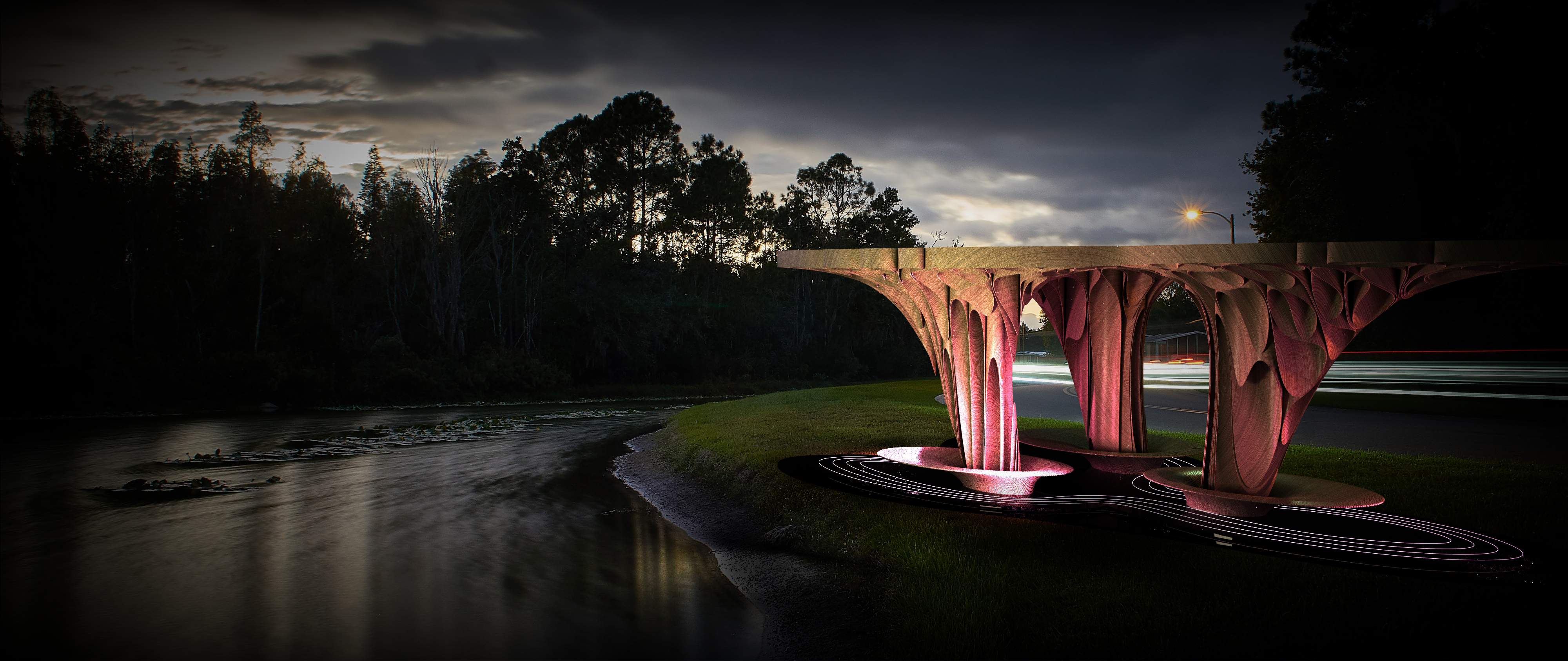
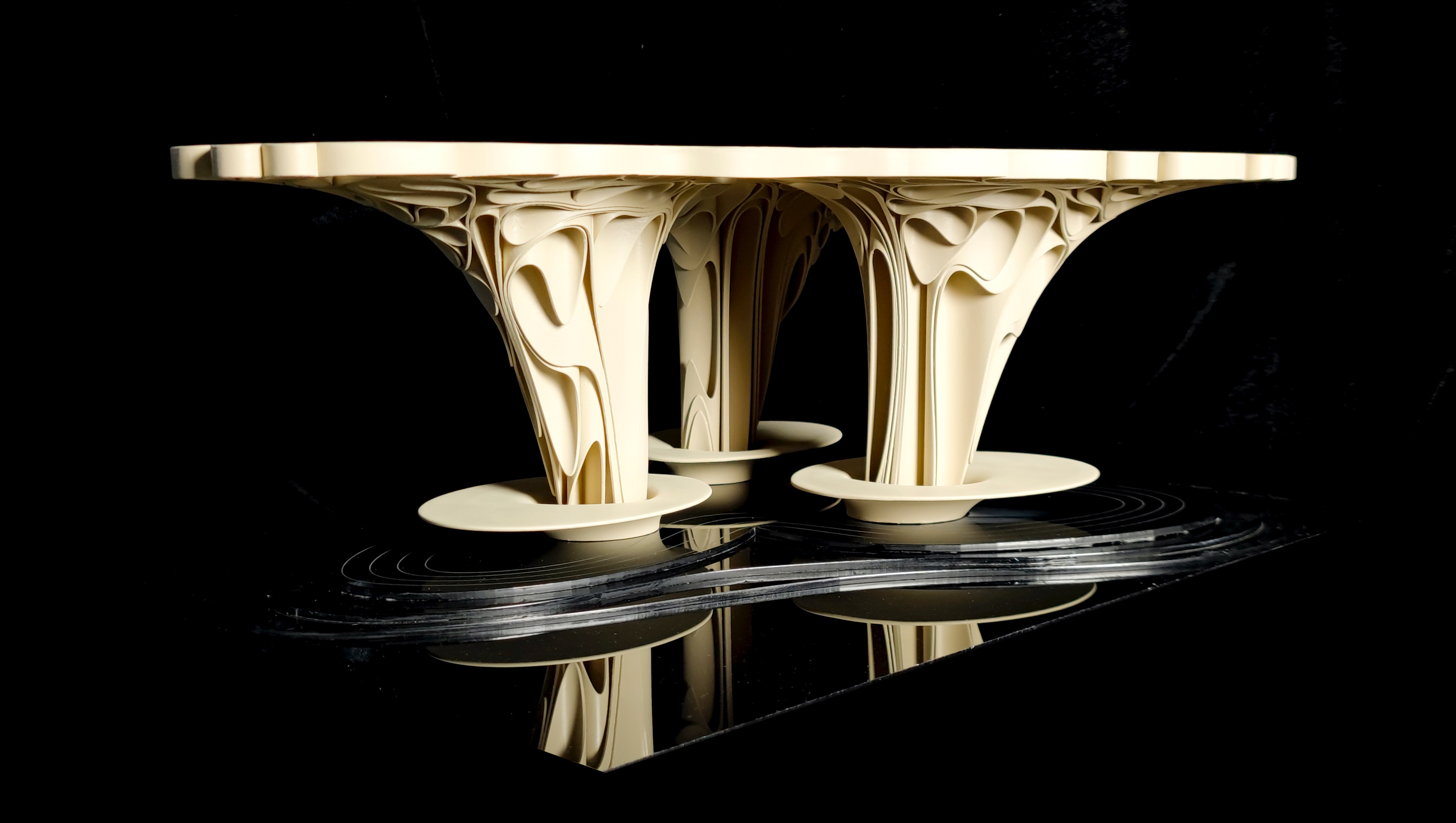
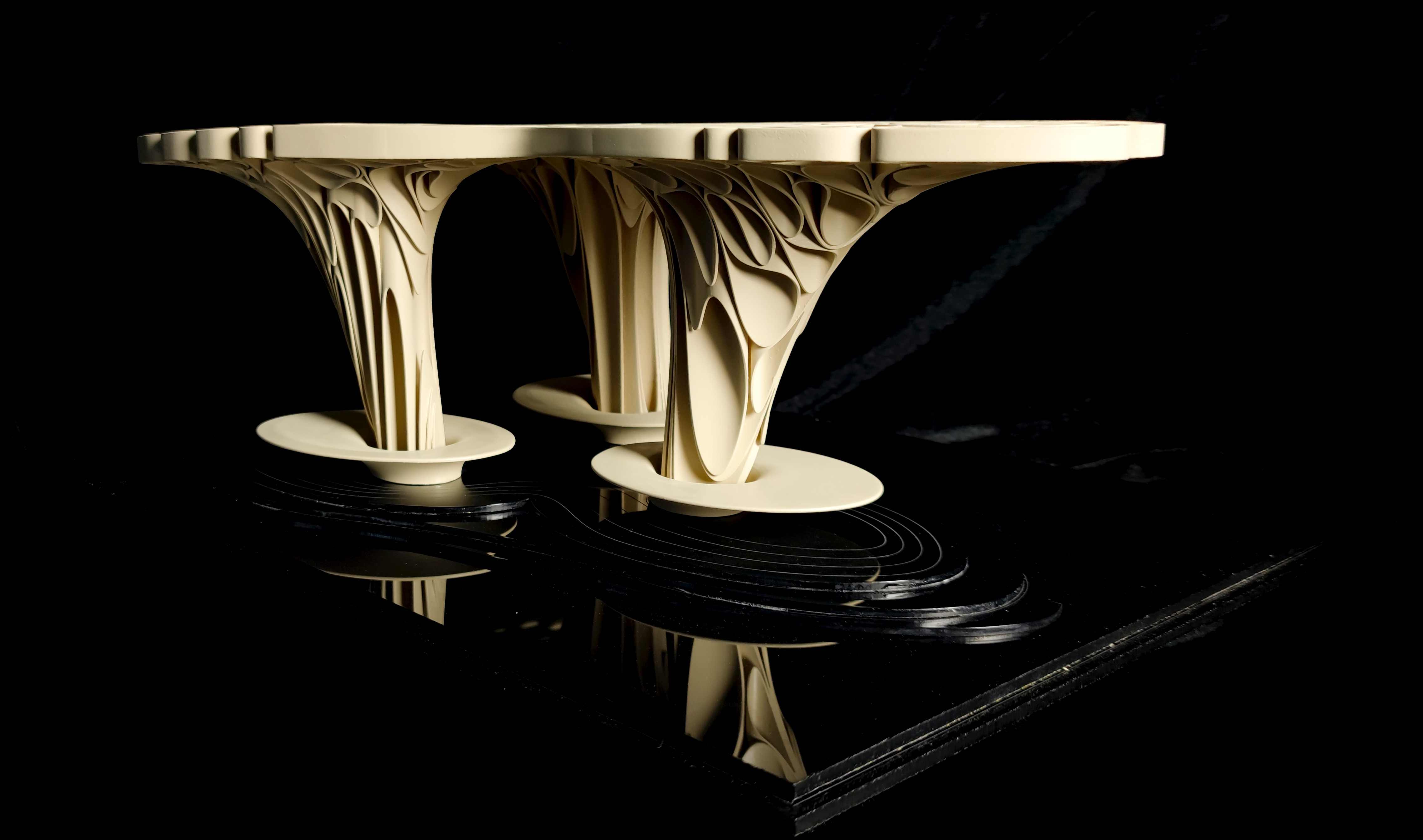
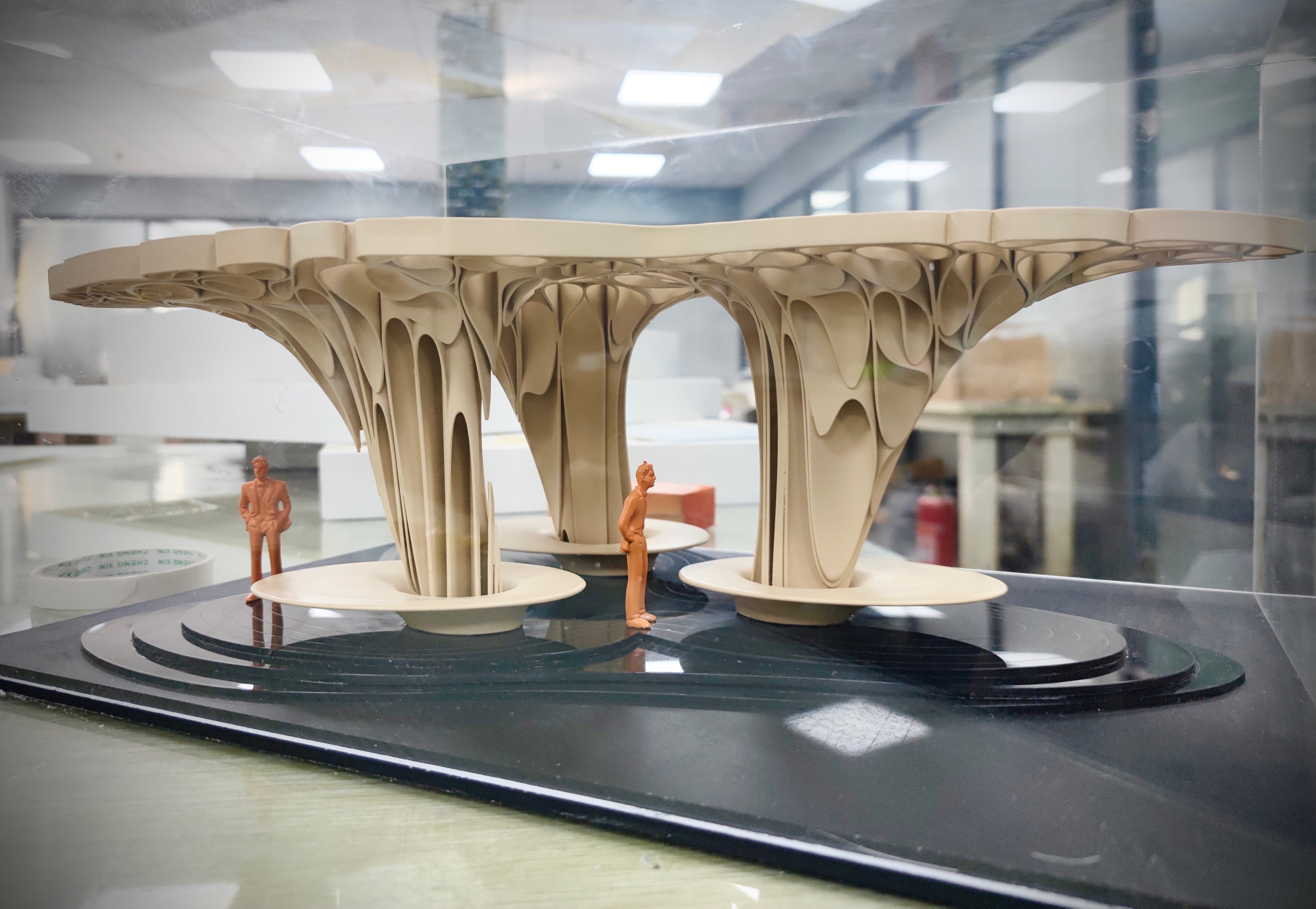
In this pavilion we used an algorithm that replicates growth of some plants and even corals. The reason why we chose to create such an intricate form is because we wanted the pavilion to interact with natural phenomena such as wind and sun. This art pavilion was supposed to be placed by Shanghai government in one of the city parks. So, we wanted to protect people from the sun after a long walk around the park. And we also wanted the intricate form of the pavilion to create nature sounds by capturing wind into it cavities and producing ‘the wind music’ similar to the musical instrument organ that is often placed in western churches and uses forced air through multiple pipes of the instrument.
My passion for algorithms and digital design led me to establish LKDN Metaverse which is a leading branch of our company now. Today, the company specializes in using algorithms and machine learning to create innovative designs for Metaverse that push the boundaries of what's possible in the virtual world.
With the increasing availability of powerful computational tools and the growing interest in sustainability, the application of algorithms and digital design is becoming more prevalent in the industry. At LKDN, my team and I are at the forefront of this trend, working to create cutting-edge designs that are both elegant and functional.
As we move towards the future of technology, the concept of the Metaverse has gained significant attention. The metaverse is a virtual space where users can interact with each other and digital objects in a simulated environment.
AI is expected to play a significant role in the Metaverse, where it can assist in creating immersive and interactive virtual environments. We s use AI to design virtual spaces that can simulate the real-world environment and optimize the user experience.
In the metaverse, AI can assist in creating virtual buildings and cities that can be inhabited by users, creating new possibilities for the architecture industry. The use of AI in the metaverse can also lead to more sustainable and efficient virtual structures, which can have a positive impact on the real-world environment.
One of the recent Metaverse projects that we did was a design of a large scale vehicle which we called MOBIUS. The project was part of the very prestigious international design prize Lexus Design Award in 2022.
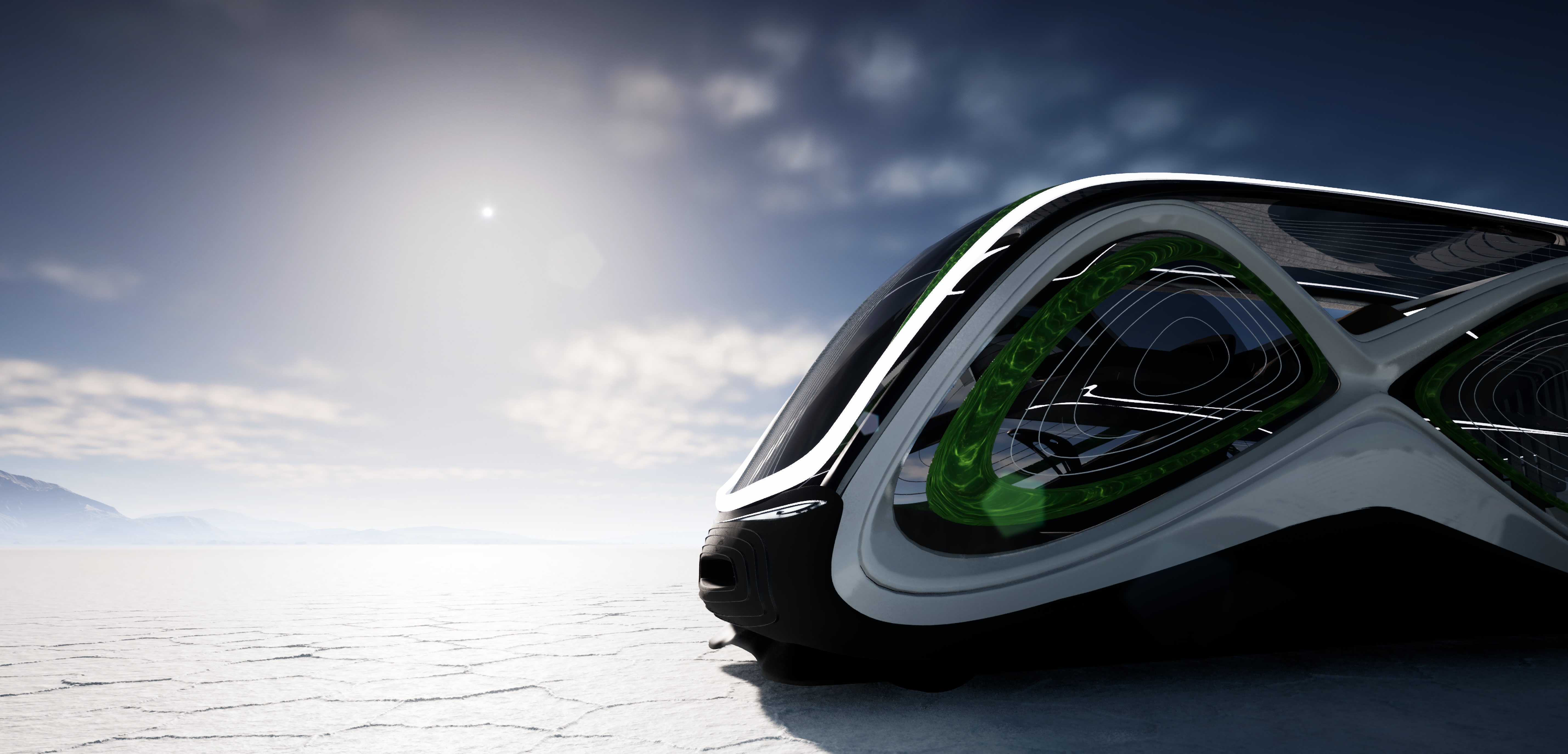
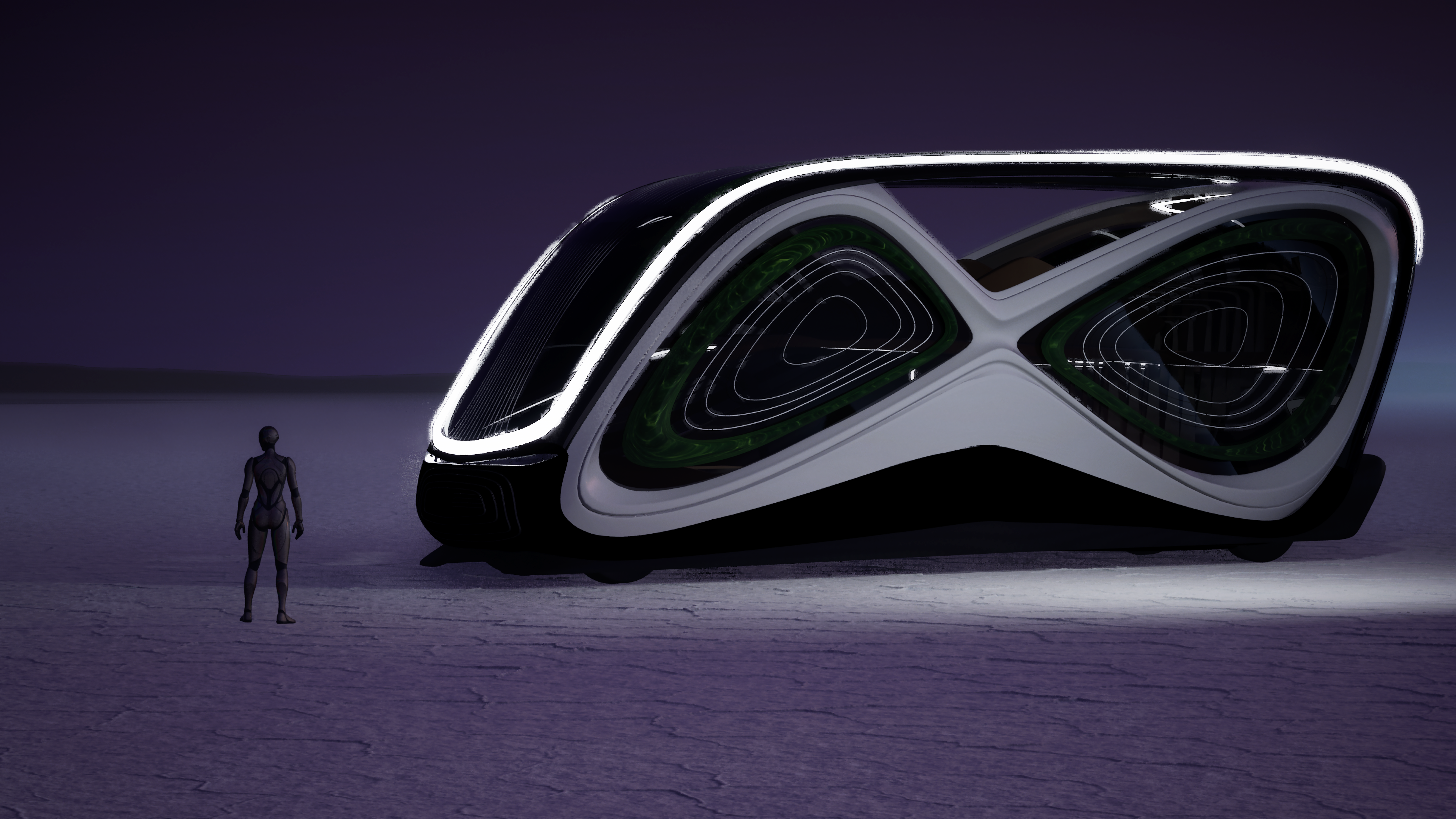
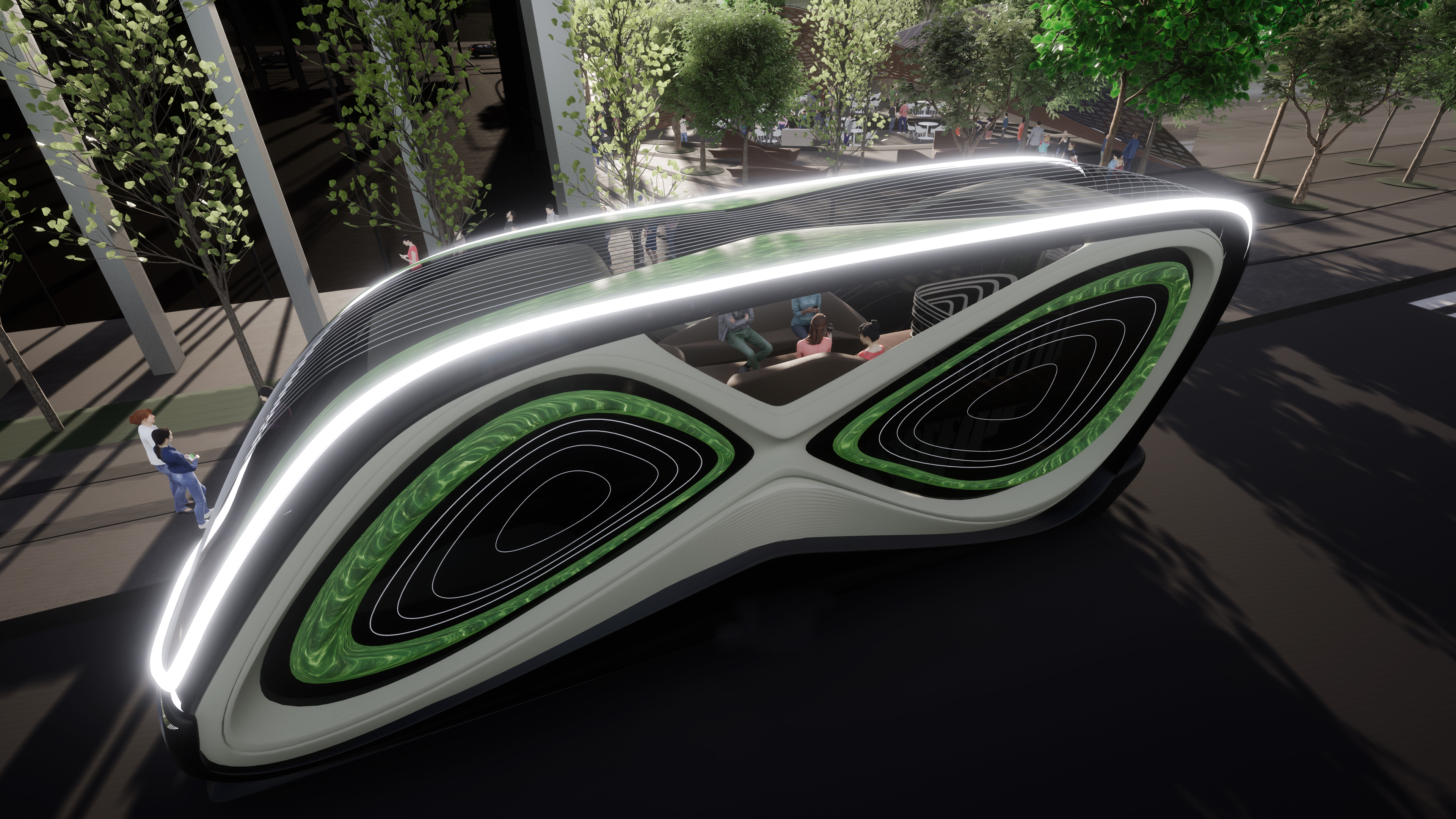
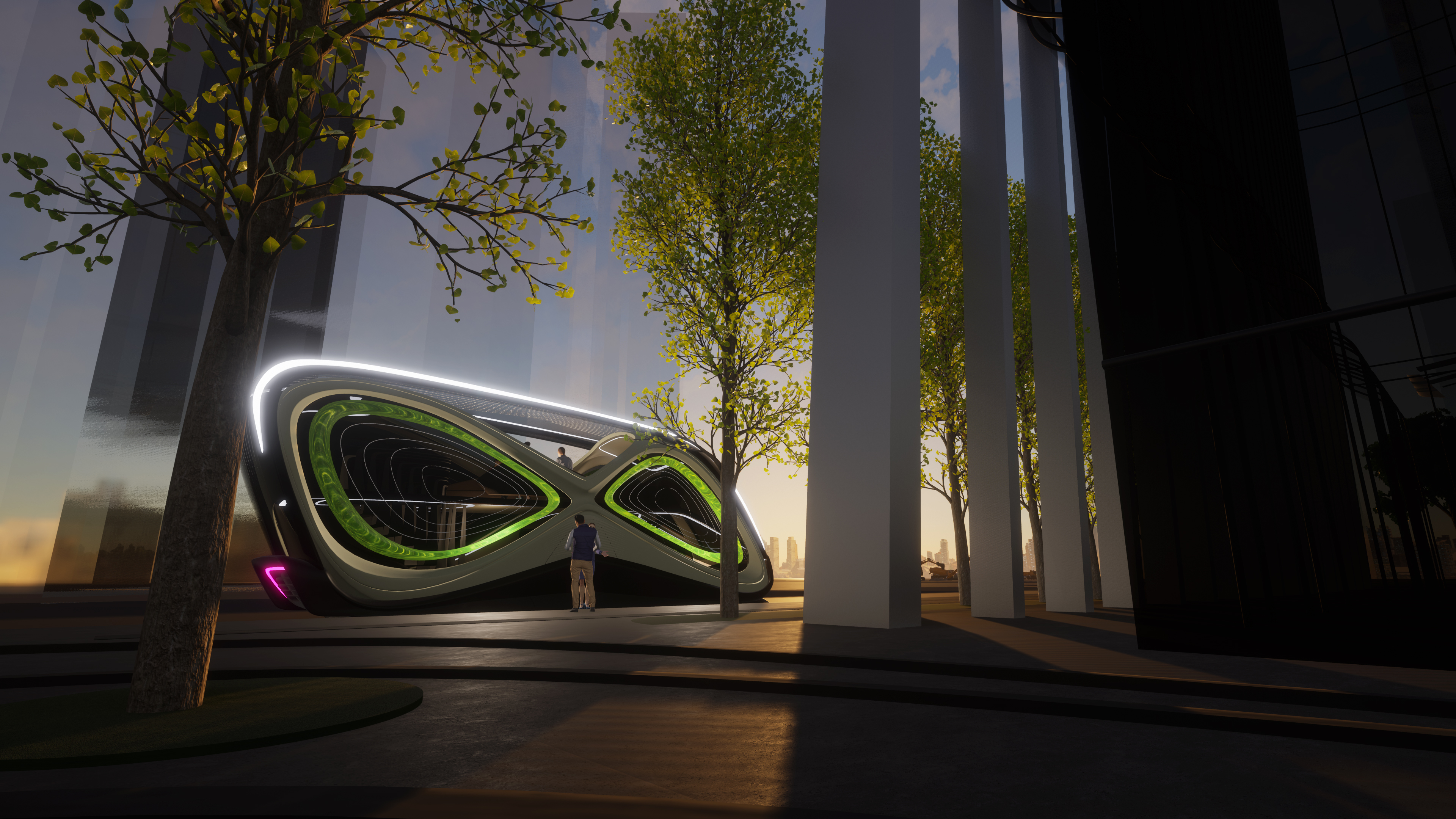
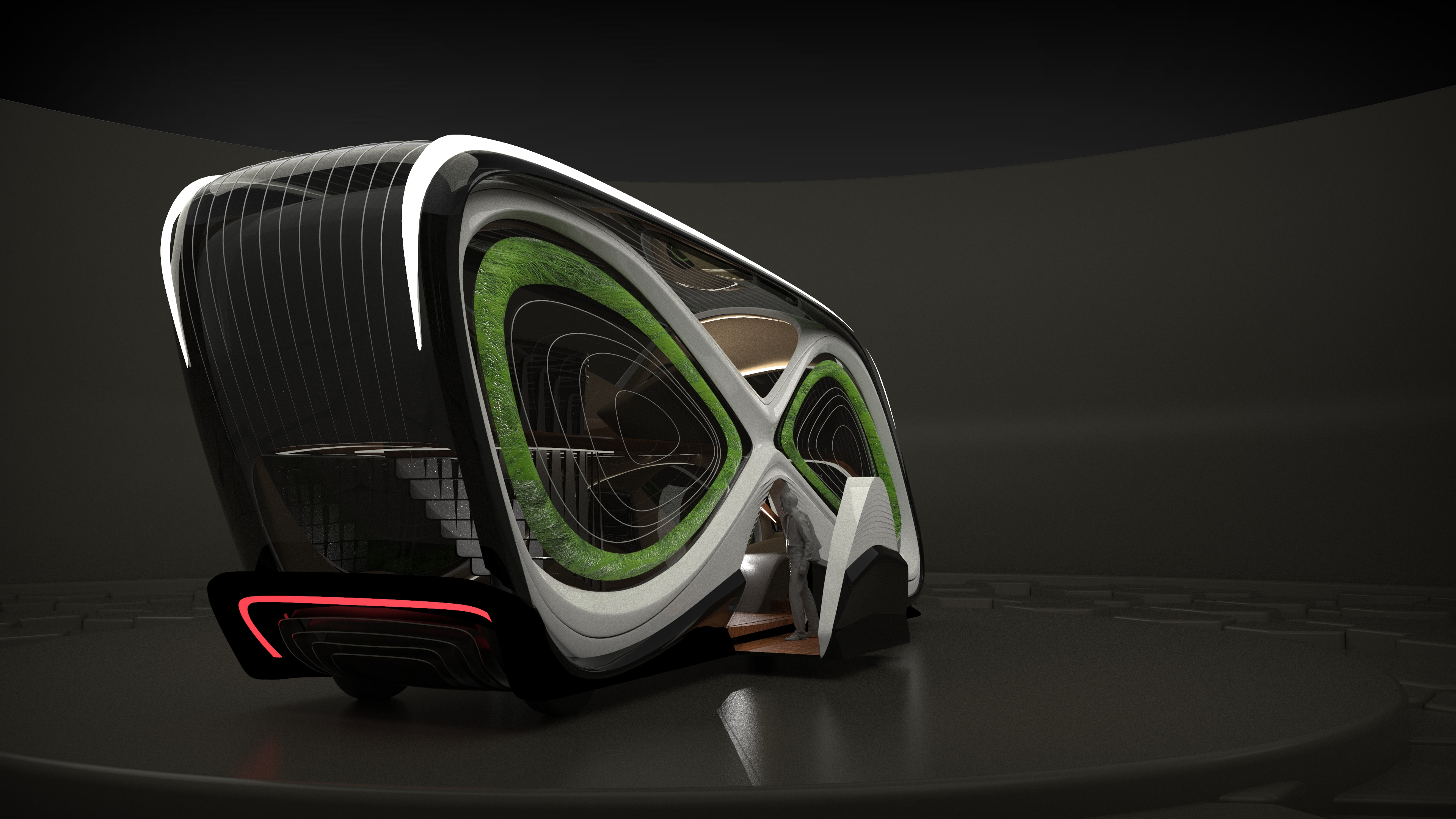
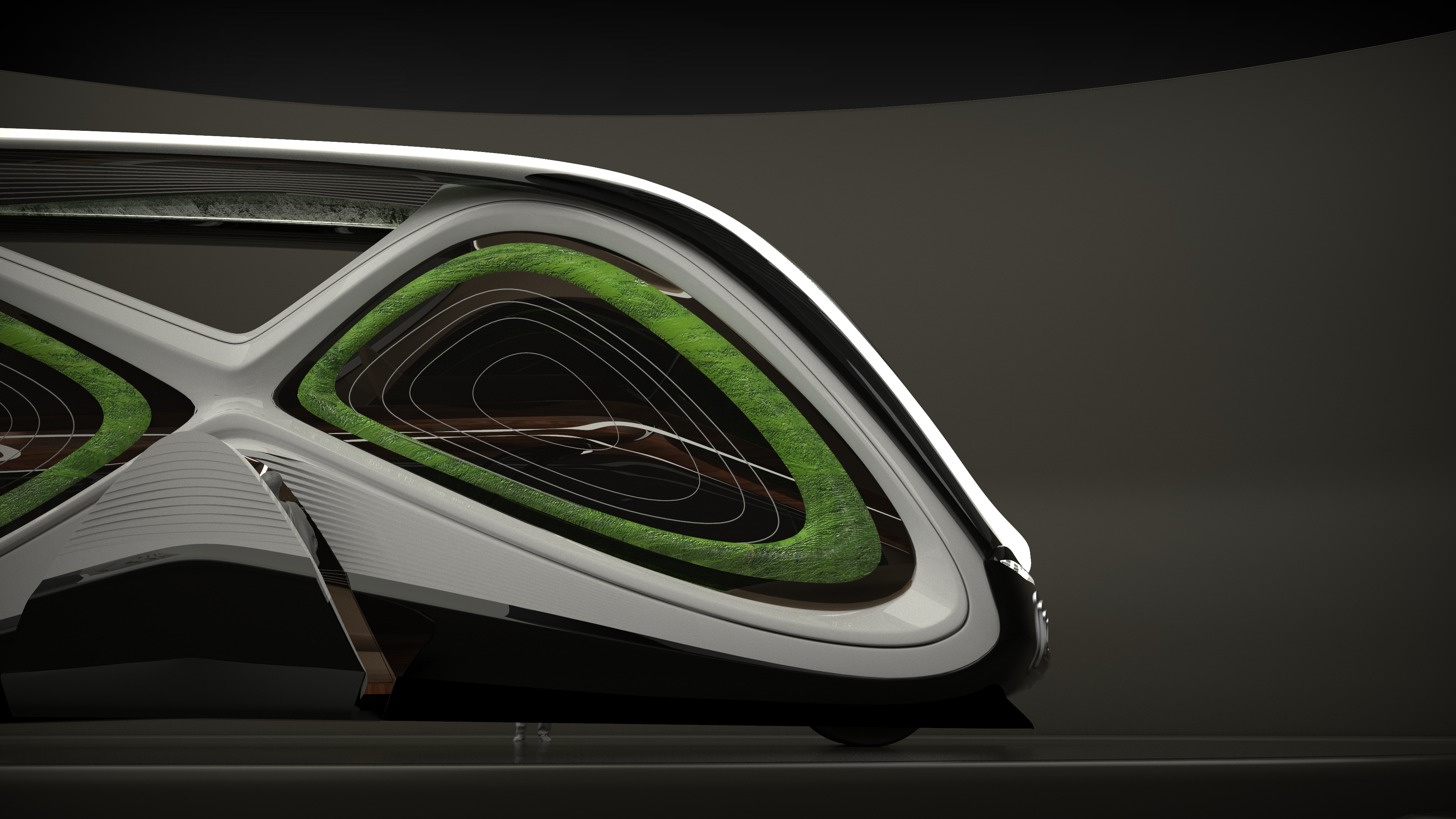
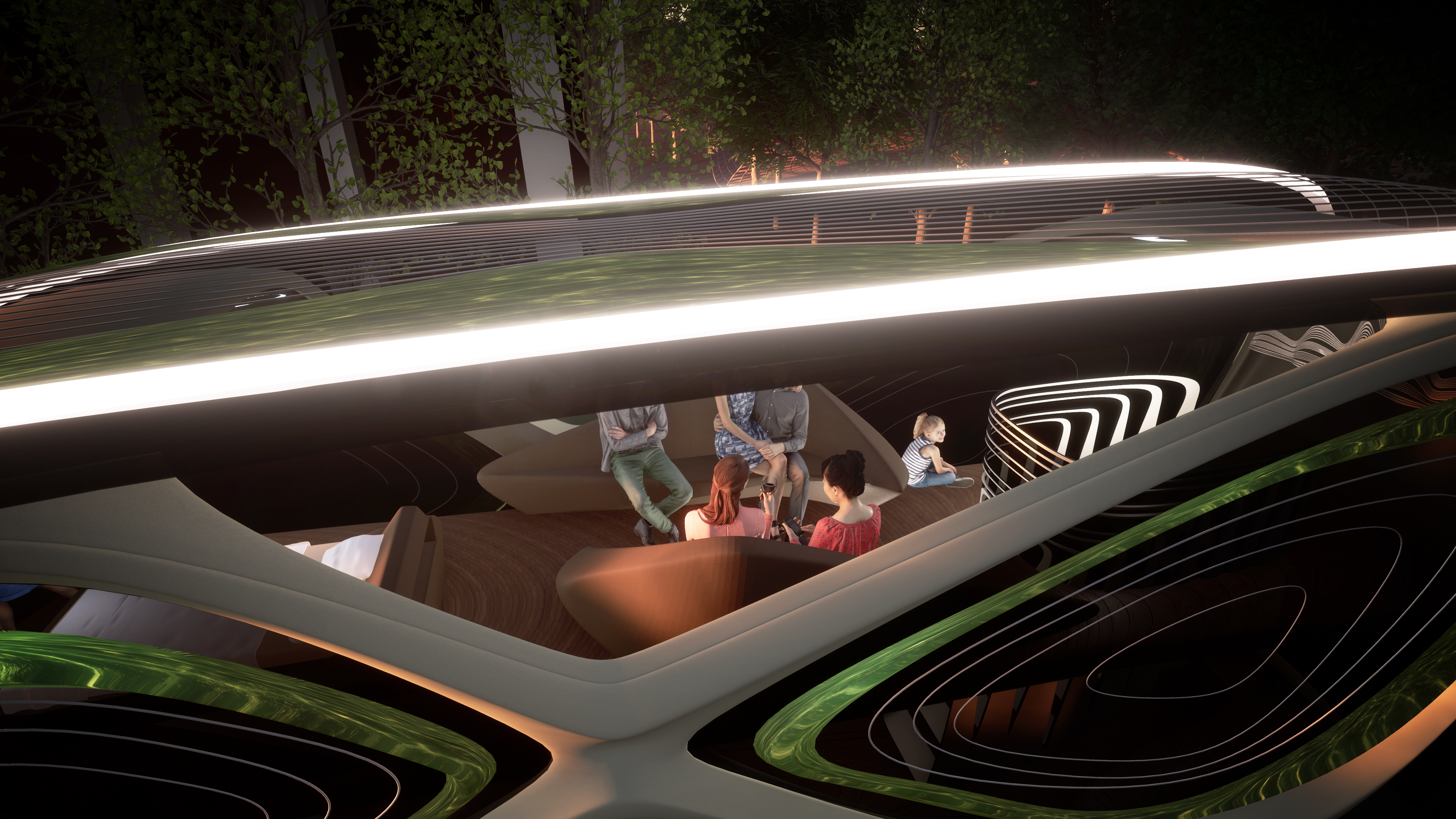
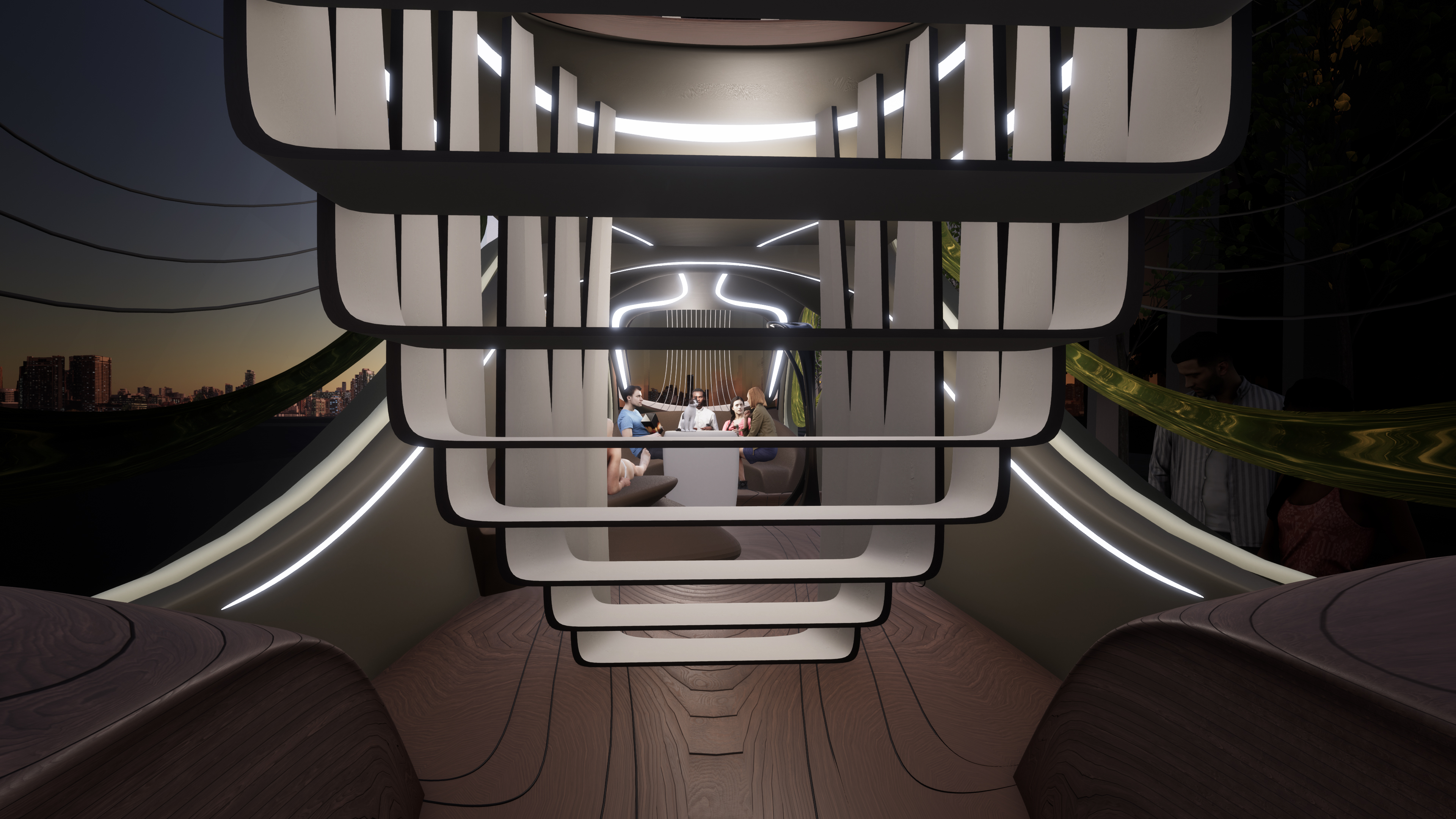
The uniqueness of this project is that this vehicle was created to enjoy multiple experience on Metaverse such as a virtual friends party, VTubing which is very popular right now, virtual studio shooting for influencers, and many more.
The concept of this vehicle came to us from an inspiration of Mobius strip geometry discovered in mathematics. The idea of the Mobius strip or loop is that it flips from inside to outside seamlessly due to a twist of the strip. This inspired us to create exterior and interior of the car by merging them together in a seamless experience for people. Another unique fact about this project is that it was fully created from scratch using Virtual Reality technology. That helped us to anticipate already at the initial design stage how it will be perceived in Metaverse by users via Virtual Reality. Even though normally Metaverse can often be experienced via PC or mobile, in our company we believe that the best and the most immersive experience of Metaverse can be achieved in VR. That is why we often conceive our Metaverse projects directly in VR from the beginning skipping even the sketch-on-paper stage.
My expertise in algorithms and digital design has also led me to explore the intersection of AI and architecture. I've been involved in numerous experiments and applications that demonstrate the potential of generative AI in this field. From using machine learning to creating AI-powered design tools, my team and I are at the forefront of this exciting new field.
Despite my love for algorithms and digital design, I recognize the value of people in the design process. While technology can facilitate the creation of innovative designs, it's ultimately the people who bring these designs to life.
The intersection of artificial intelligence (AI) and architecture is a fascinating area of research that is gaining traction in recent years. The integration of AI in architecture has the potential to revolutionize the way we design and even construct buildings, resulting in more efficient and sustainable structures.
The current research in AI and architecture is focused on Neural Networks and machine learning to solve complex design problems. For example, AI can be used to analyze and optimize building layouts, material usage, and energy consumption. Additionally, AI can assist architects in generating multiple design options and evaluating their feasibility and sustainability in a very short amount of time.
One of the notable examples of AI in architecture is the use of generative design. Generative design uses algorithms to create a vast number of design options and evaluates them based on predefined criteria. This approach enables architects to explore design options that would be impossible to consider manually, leading to more innovative and optimized designs.
In this project of our studio were able to iterate hundreds of various design options just in half a day. This project is a collection of Metaverse vehicles for one art and design oriented Metaverse platform. The task was to create 200 different Metaverse vehicles which people could buy as a 3D NFT from the platform, and then use it on any Metaverse platform of their choice just by uploading it to the virtual environment by drug-and-drop, and then ride in it to explore the multiple virtual worlds of Metaverses.
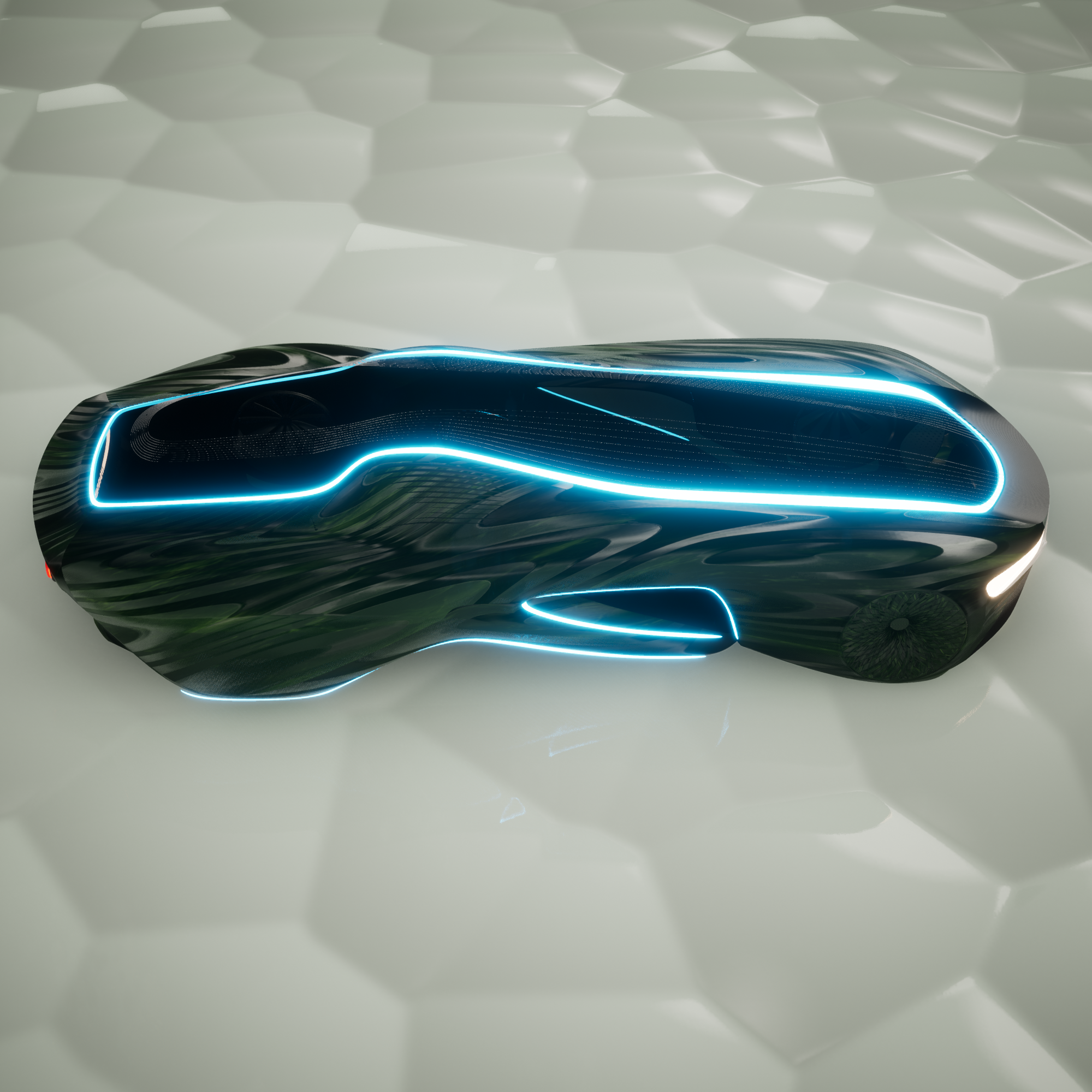
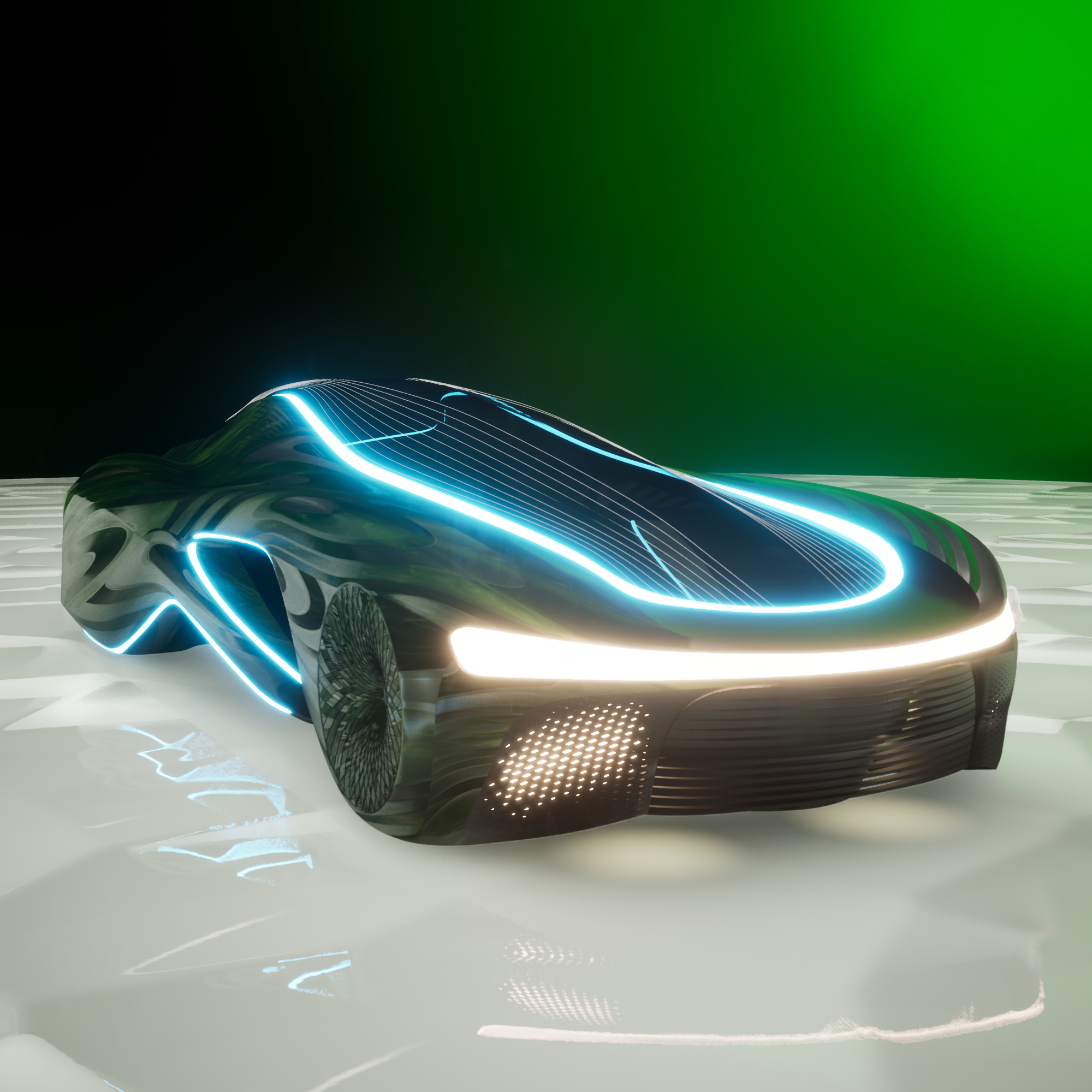
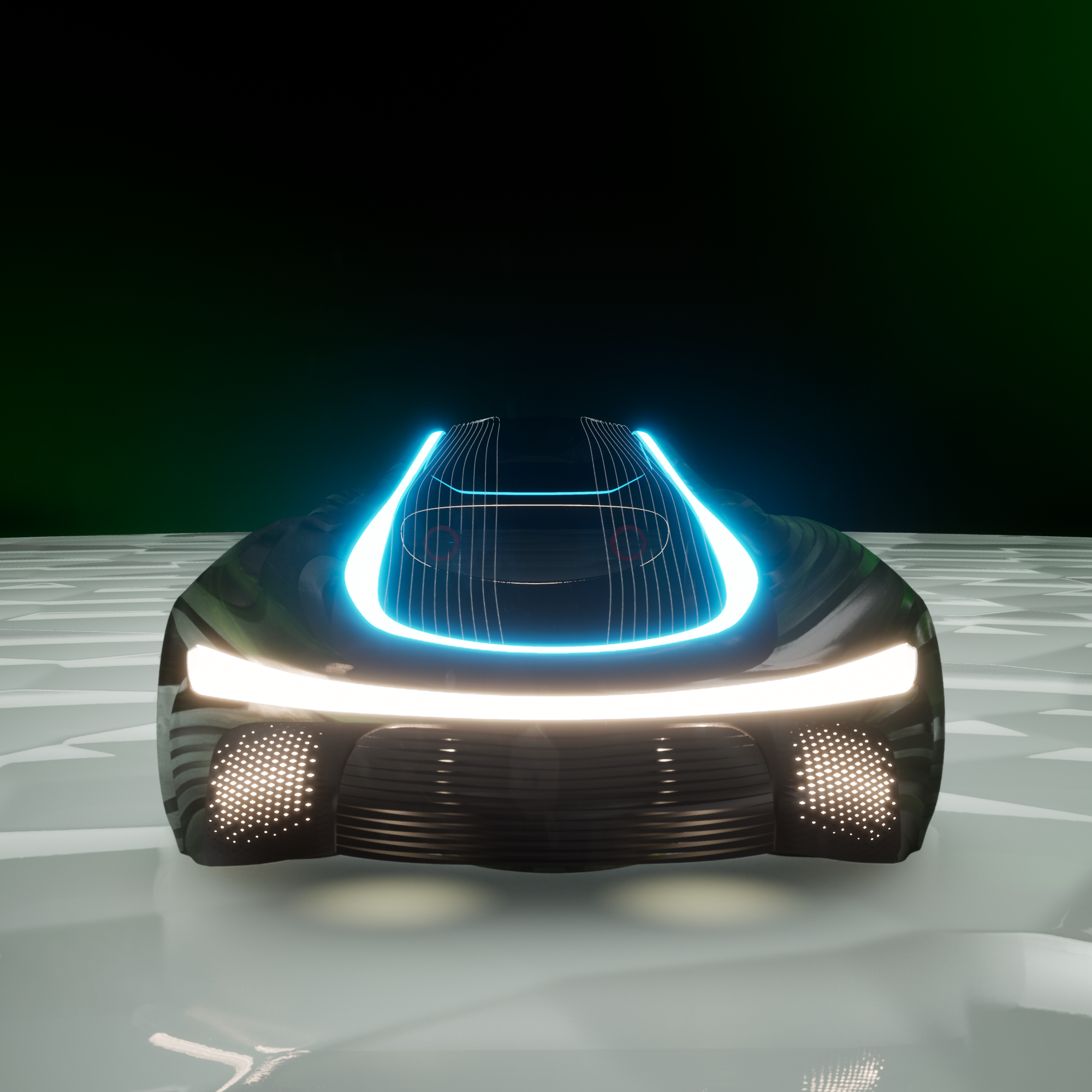
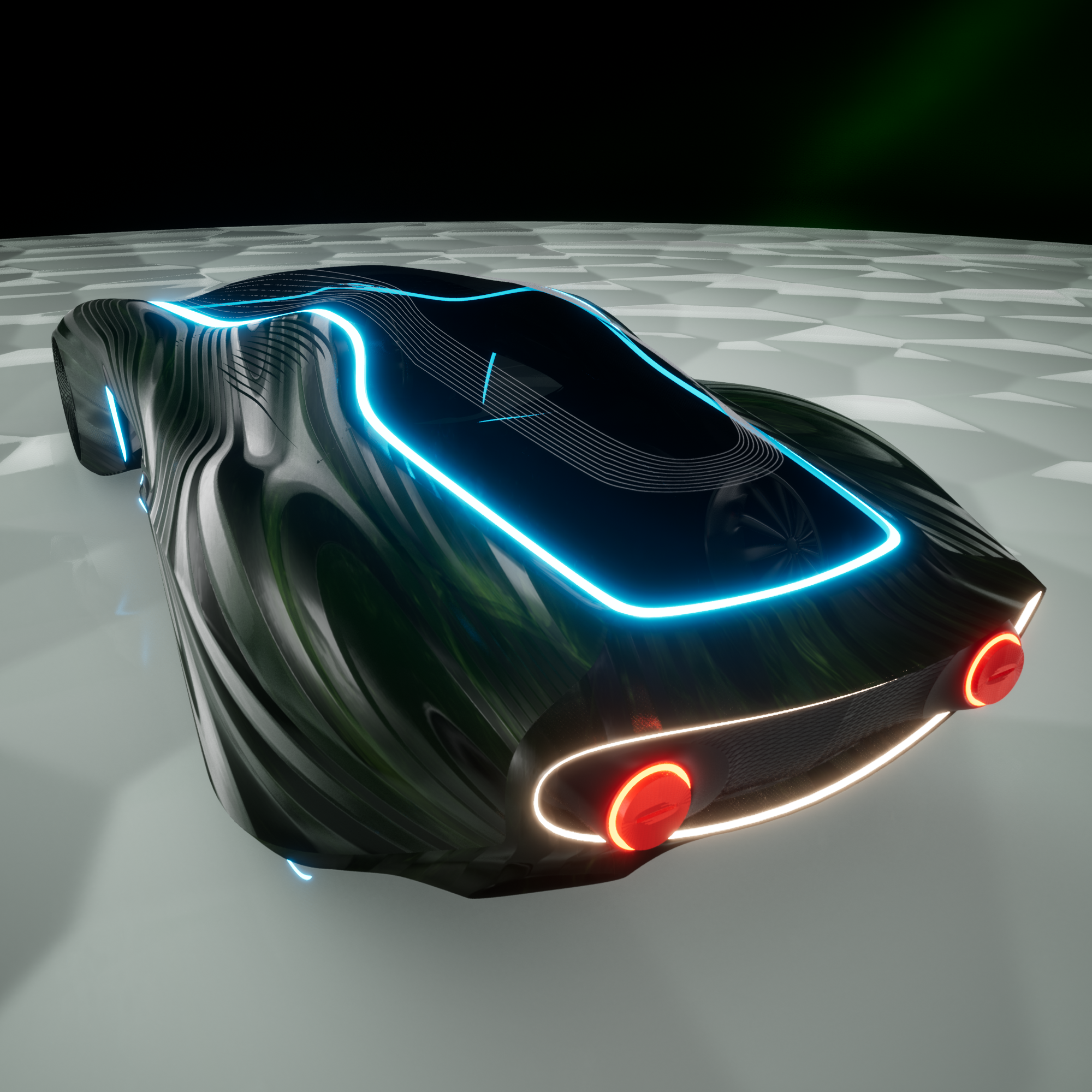
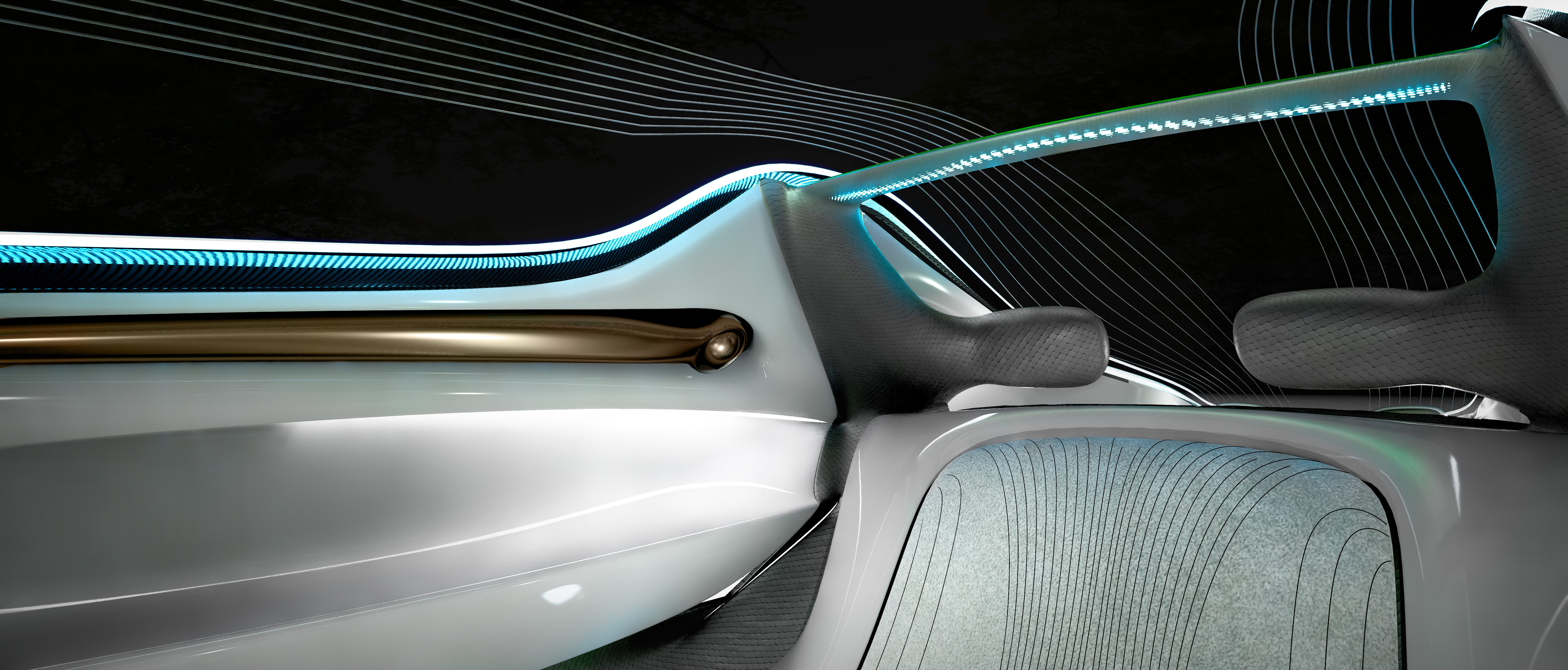
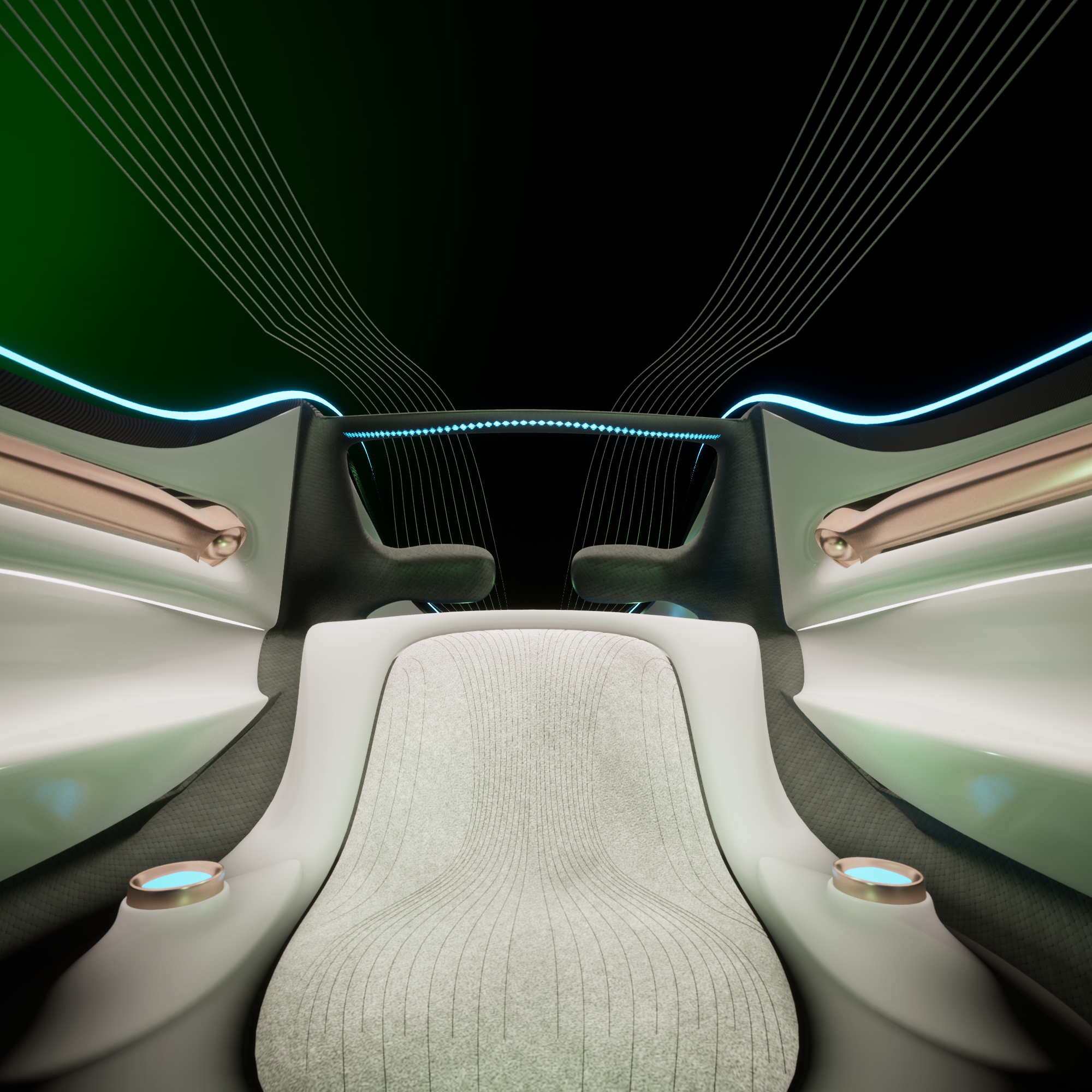
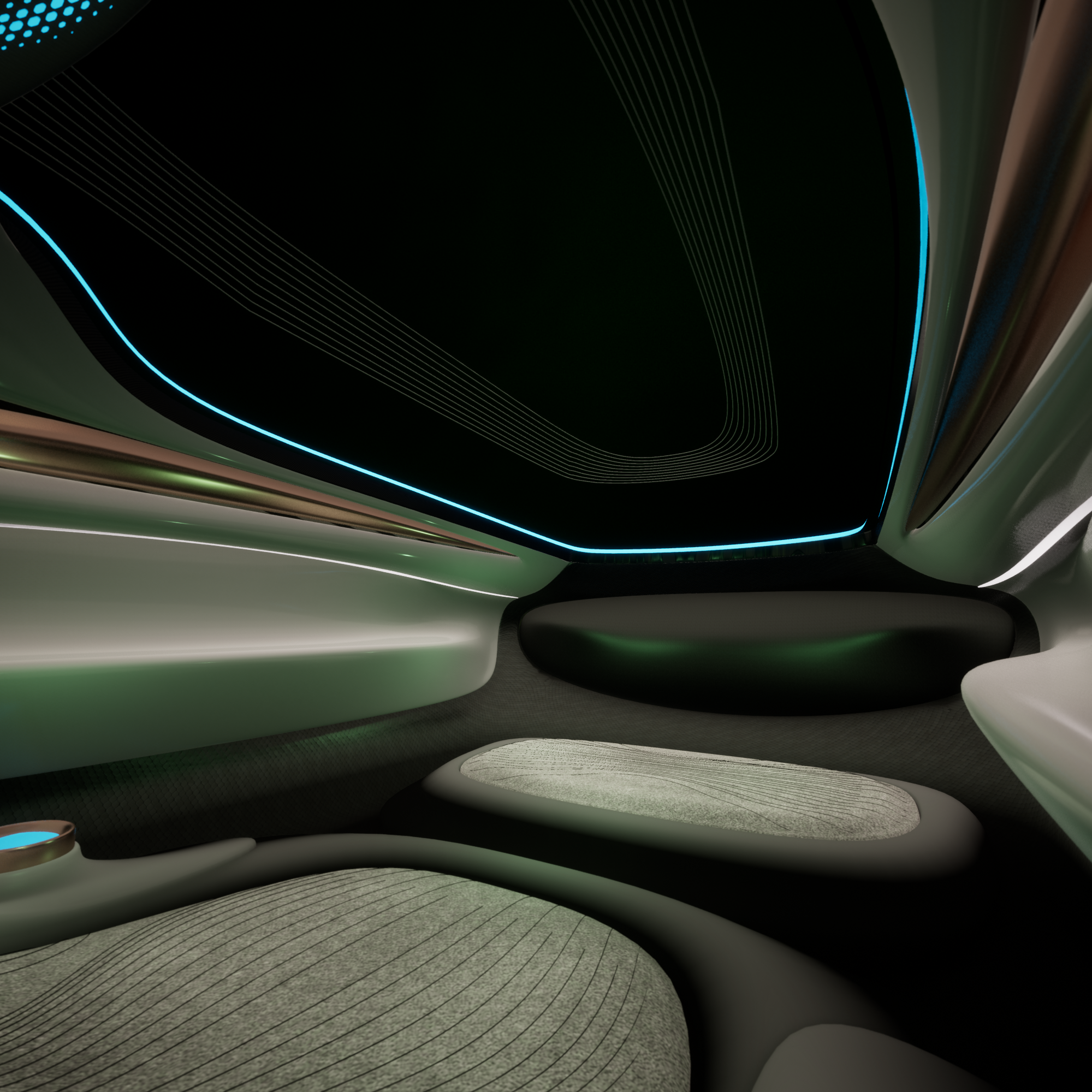
Thanks to the power of generative AI we created dozens of options in 2D to further model them in 3D and optimize for Metaverse use.
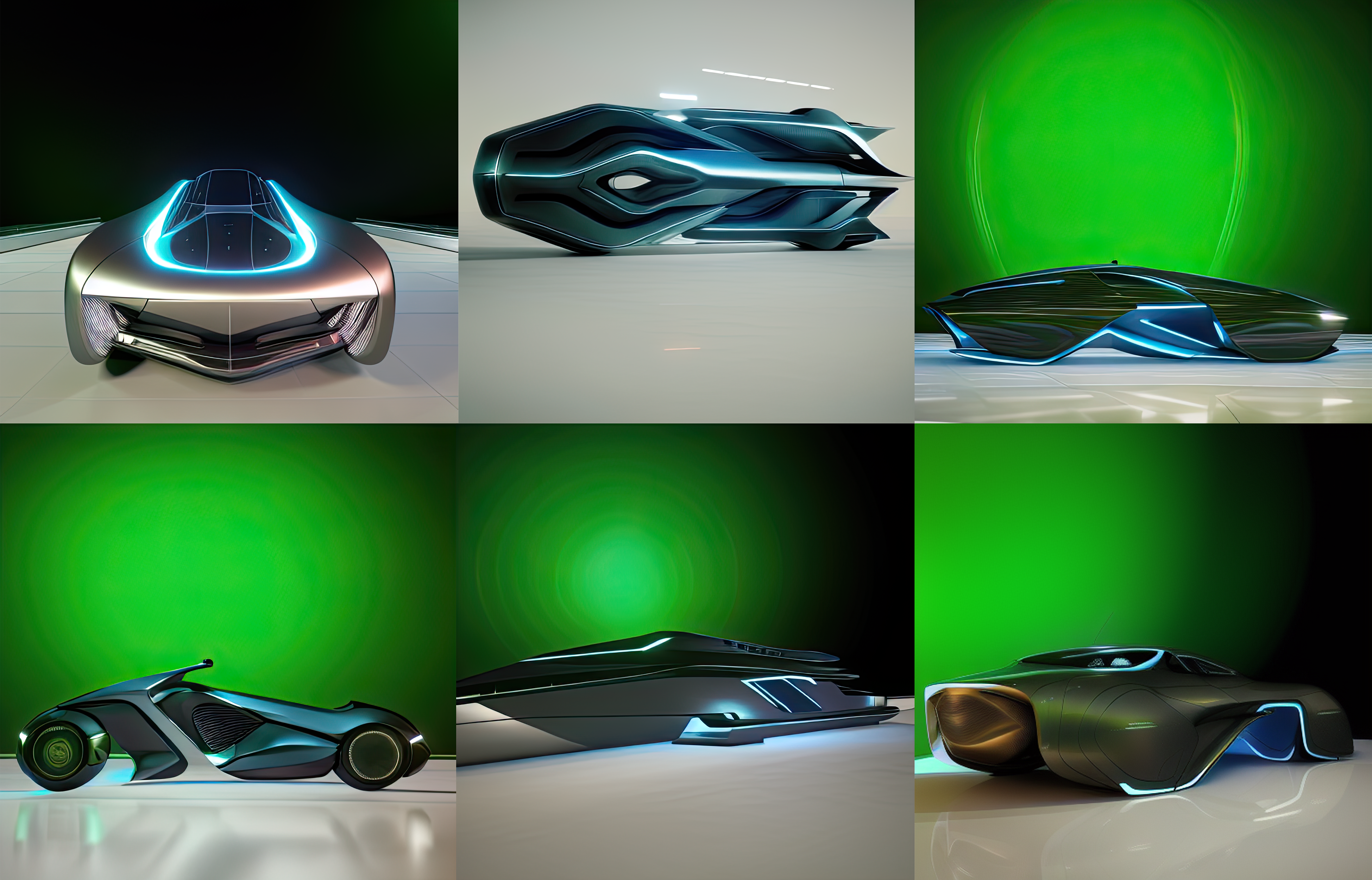
We were able to produce in a very short amount of time not only car options of the original design of ours but also its version like aircrafts, motorcycles, amphibia vehicles, etc.
The digital practice of space design is progressing rapidly, thanks to advancements in AI and machine learning. One of the most significant advantages of using algorithms in space design is the ability to optimize building performance.
Moreover, AI can assist architects in designing structures that are tailored to the specific needs of their occupants. By analysing data such as user preferences, behaviour, and habits, AI can generate design solutions that enhance the occupant's experience and well-being.
Artificial Intelligence has been making waves in various fields, and architecture is no exception. In recent years, the integration of AI in architecture has opened up a new realm of possibilities for designers.
The following examples from our R&D process shows how spaces can be efficiently and very quickly created using generative AI technology. As we work a lot with car brands we often need to create concepts of their Metaverse showroom or an event space of their product launch. And then after we establish the concept design direction, look and feel, a story line, etc. then we can start creating the 3D experience on Metaverse based on the confirmed design with a client.
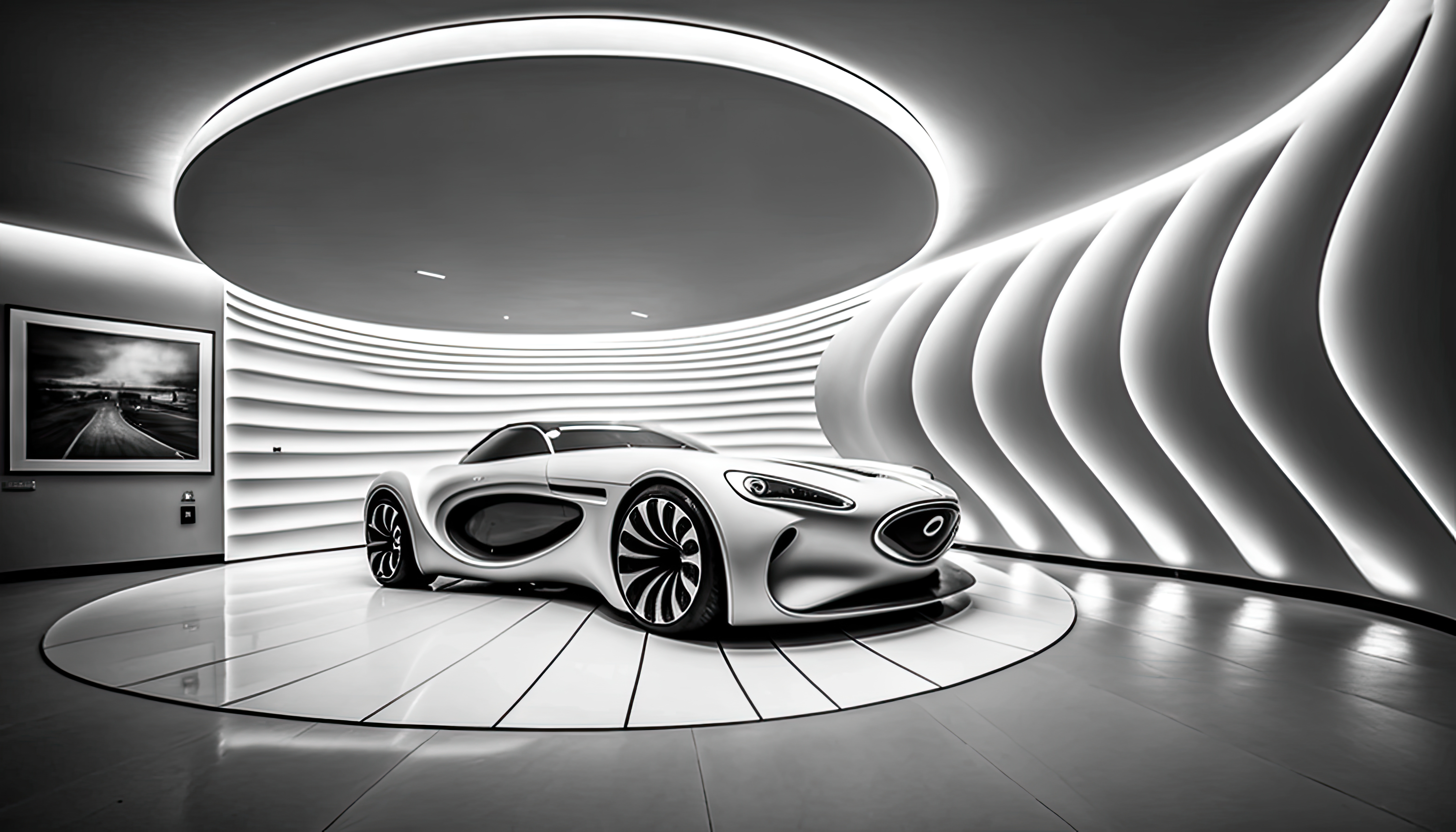
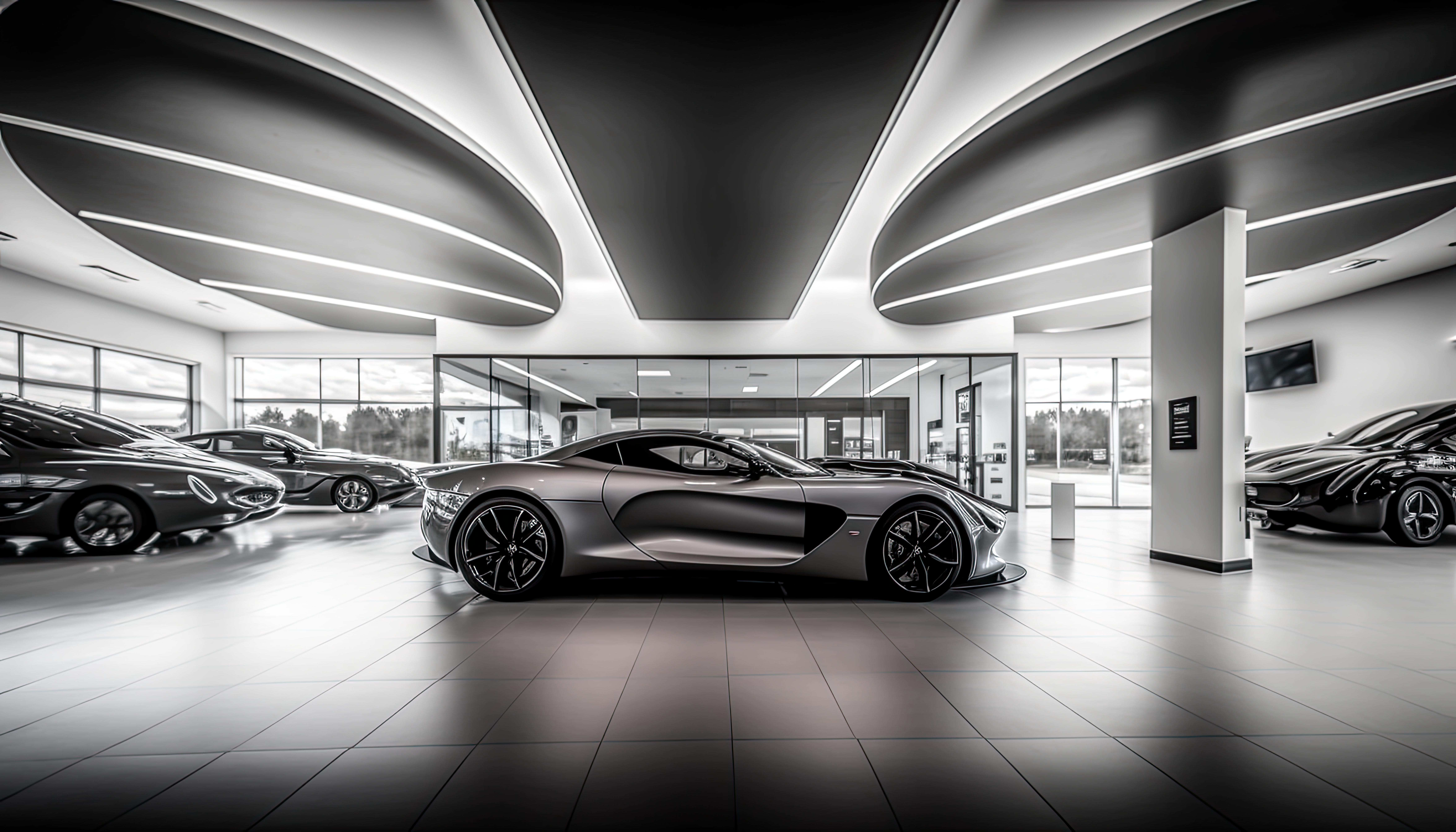
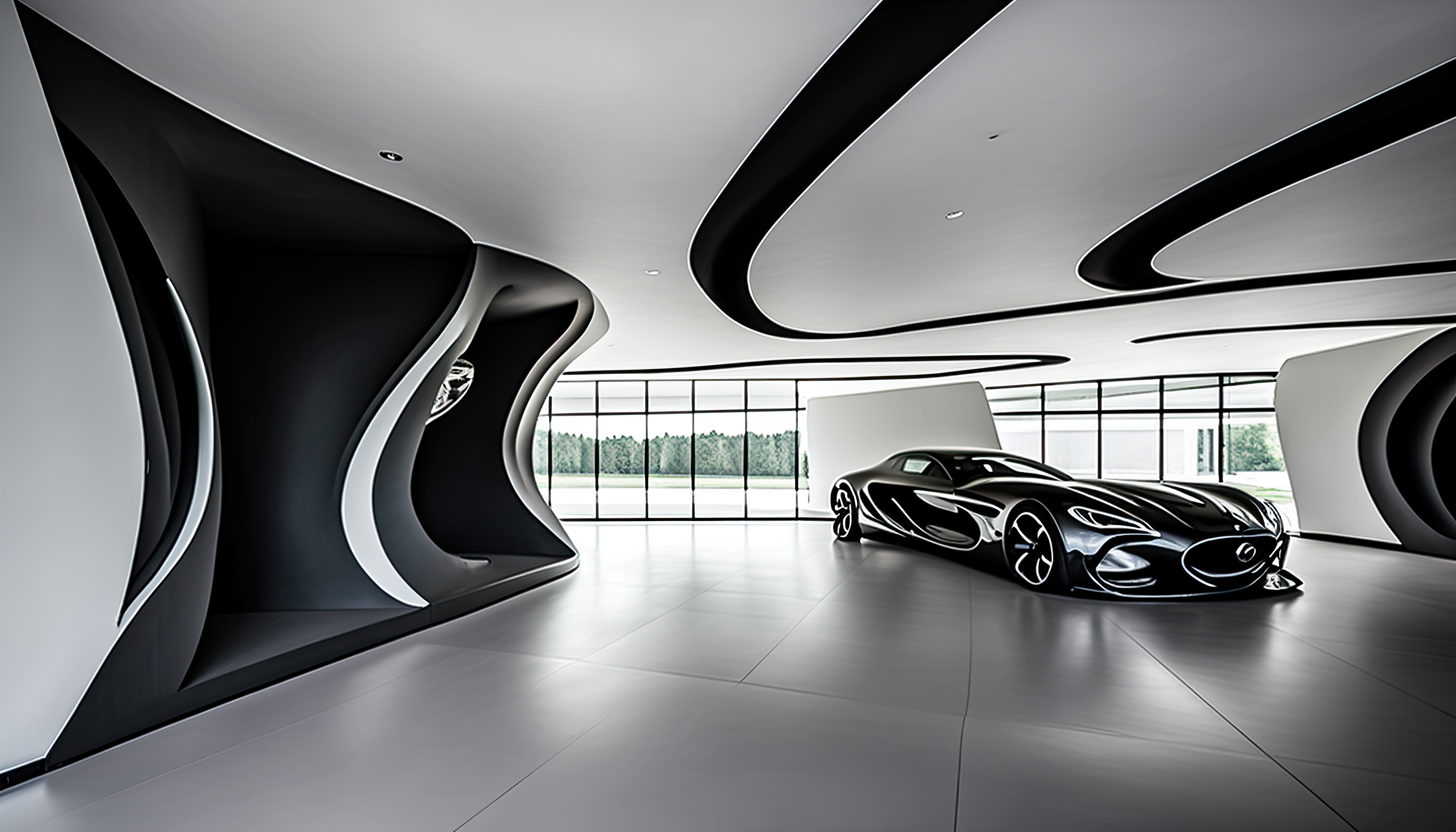
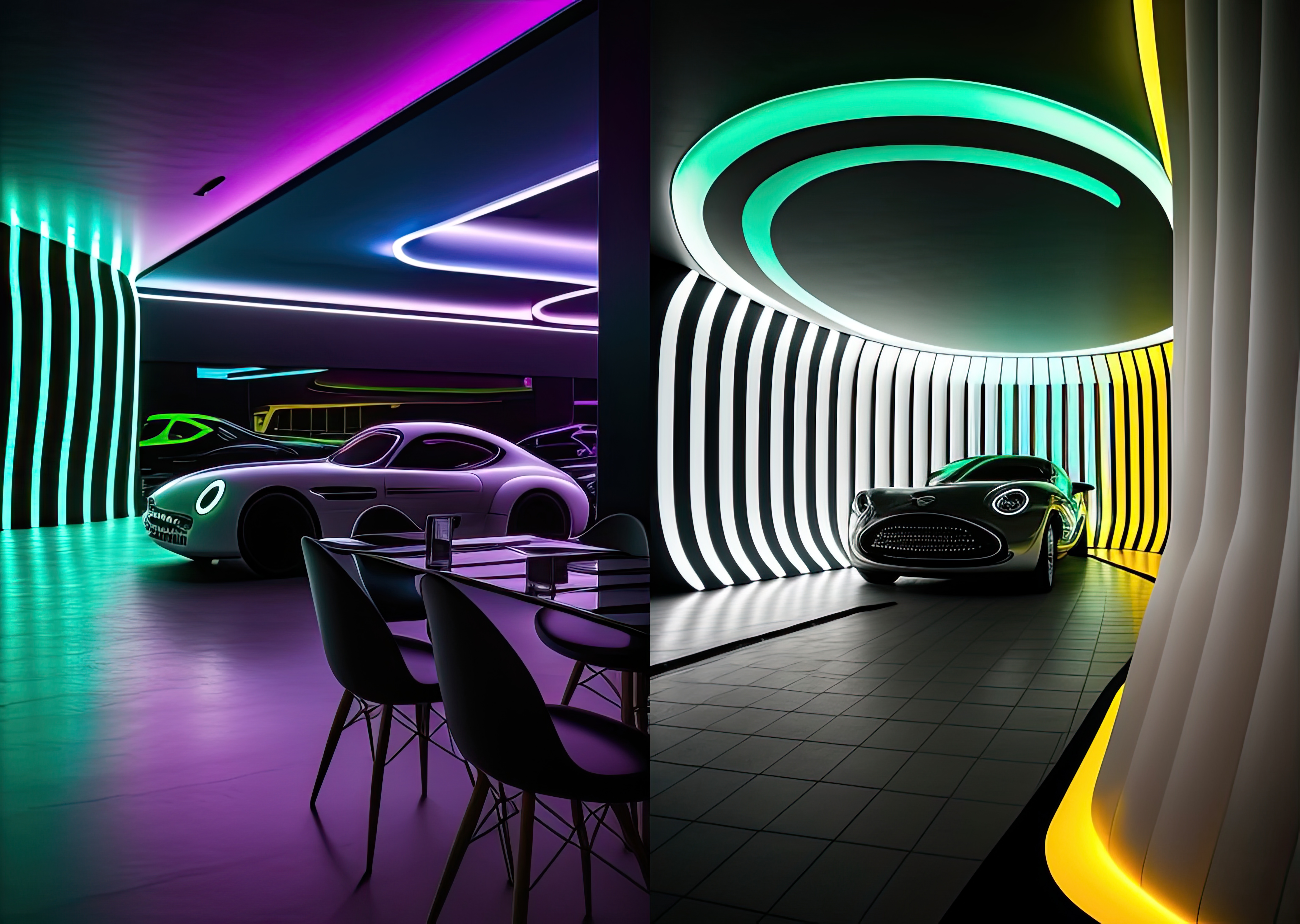
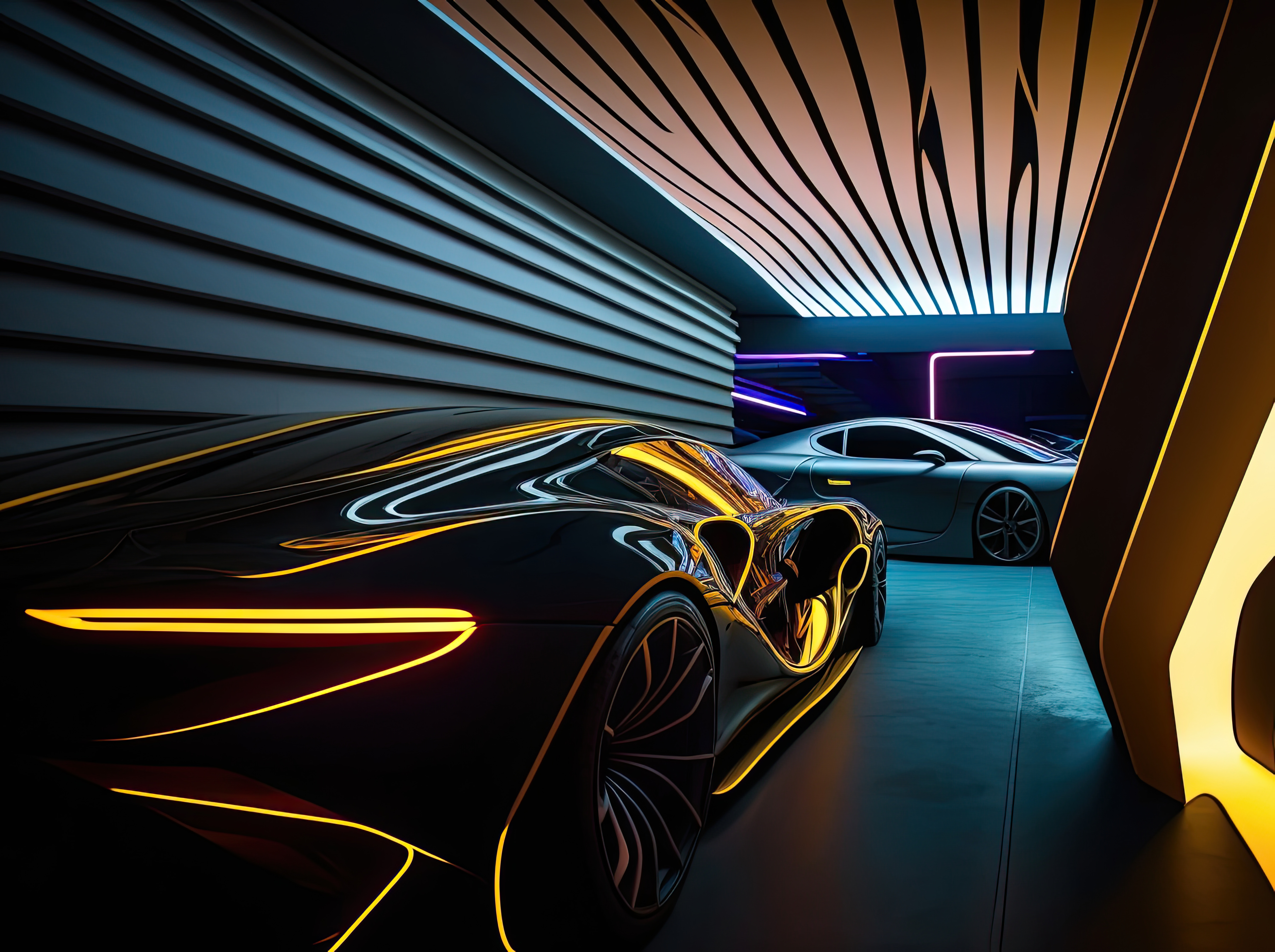
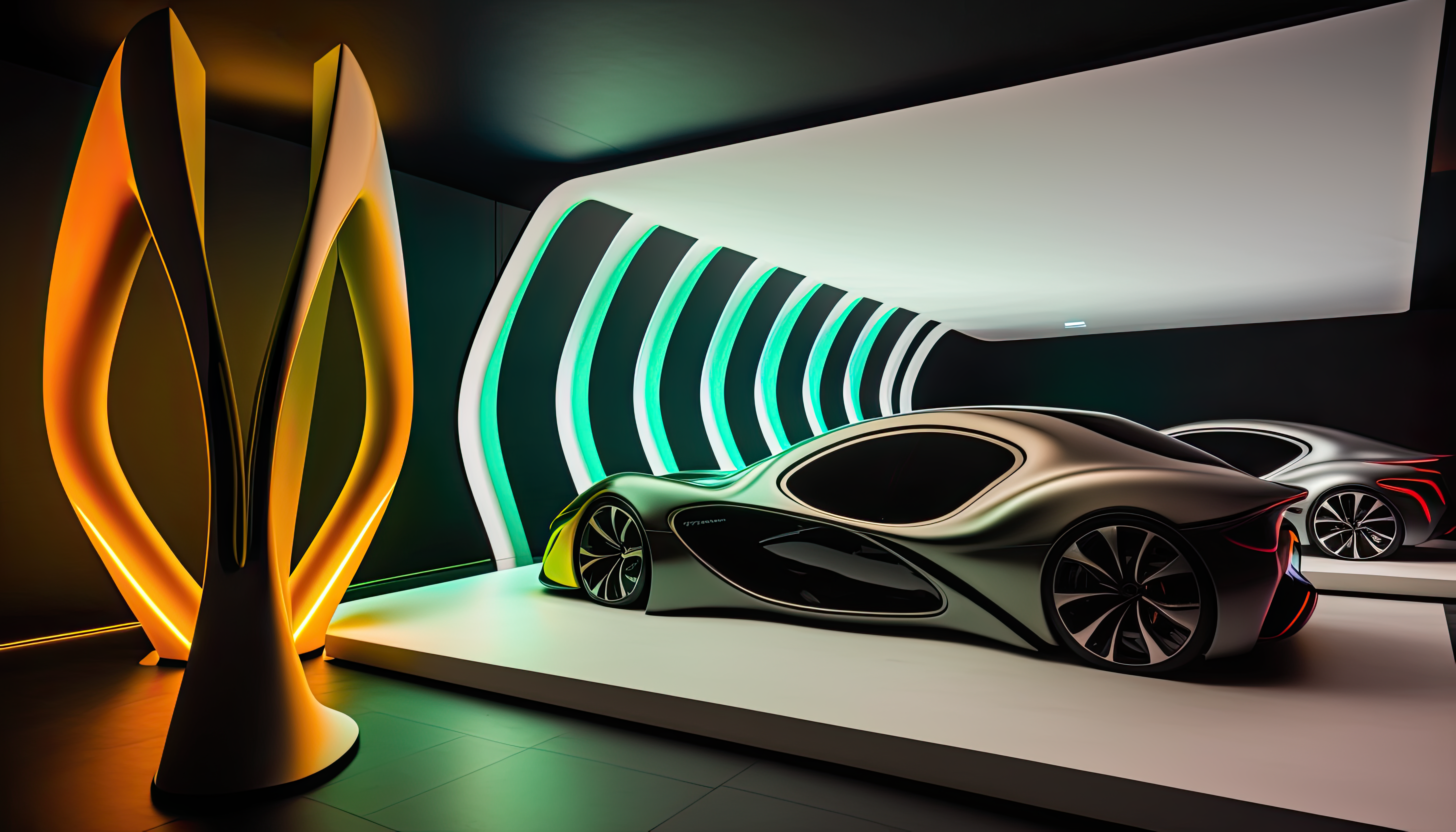
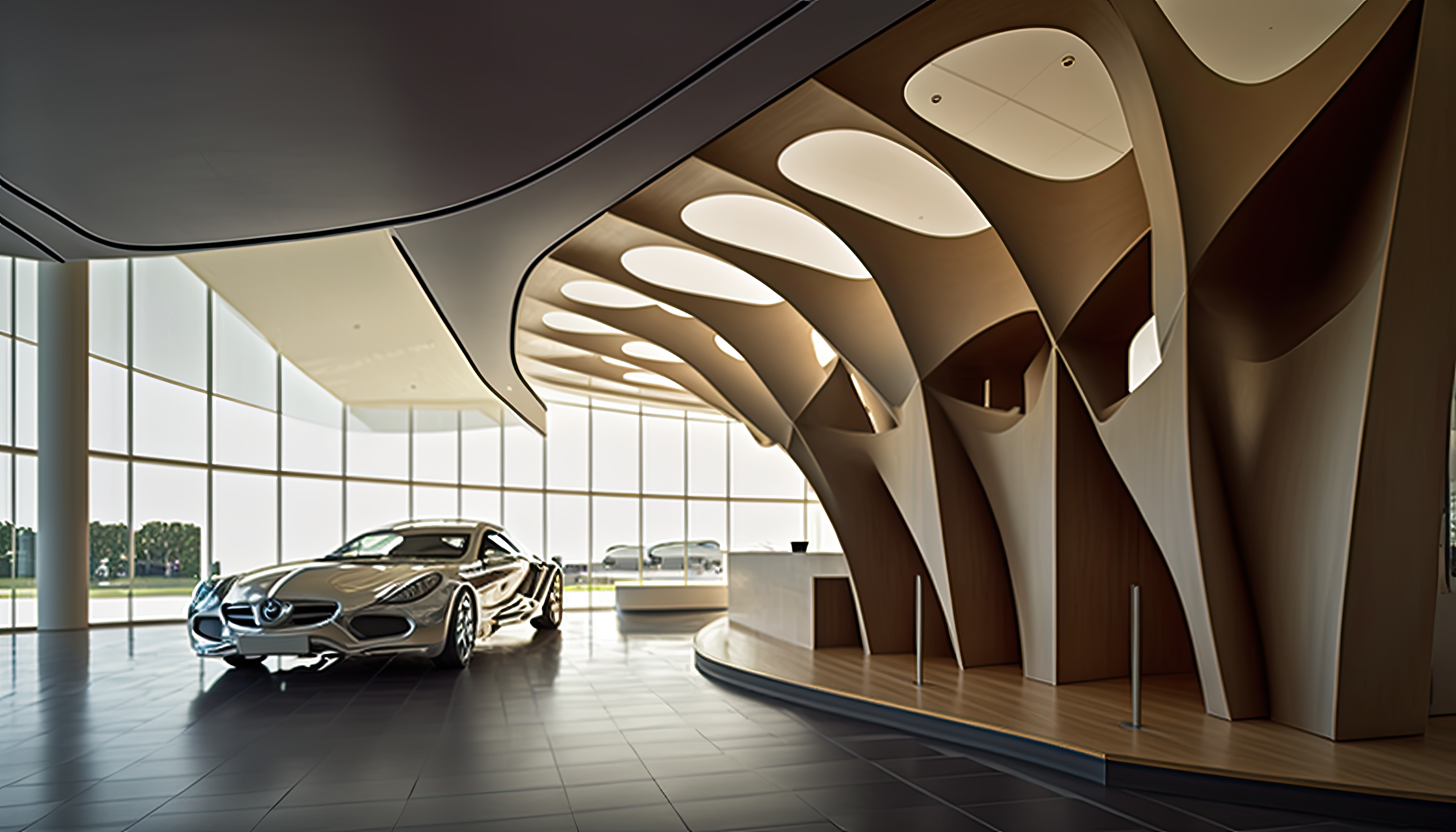
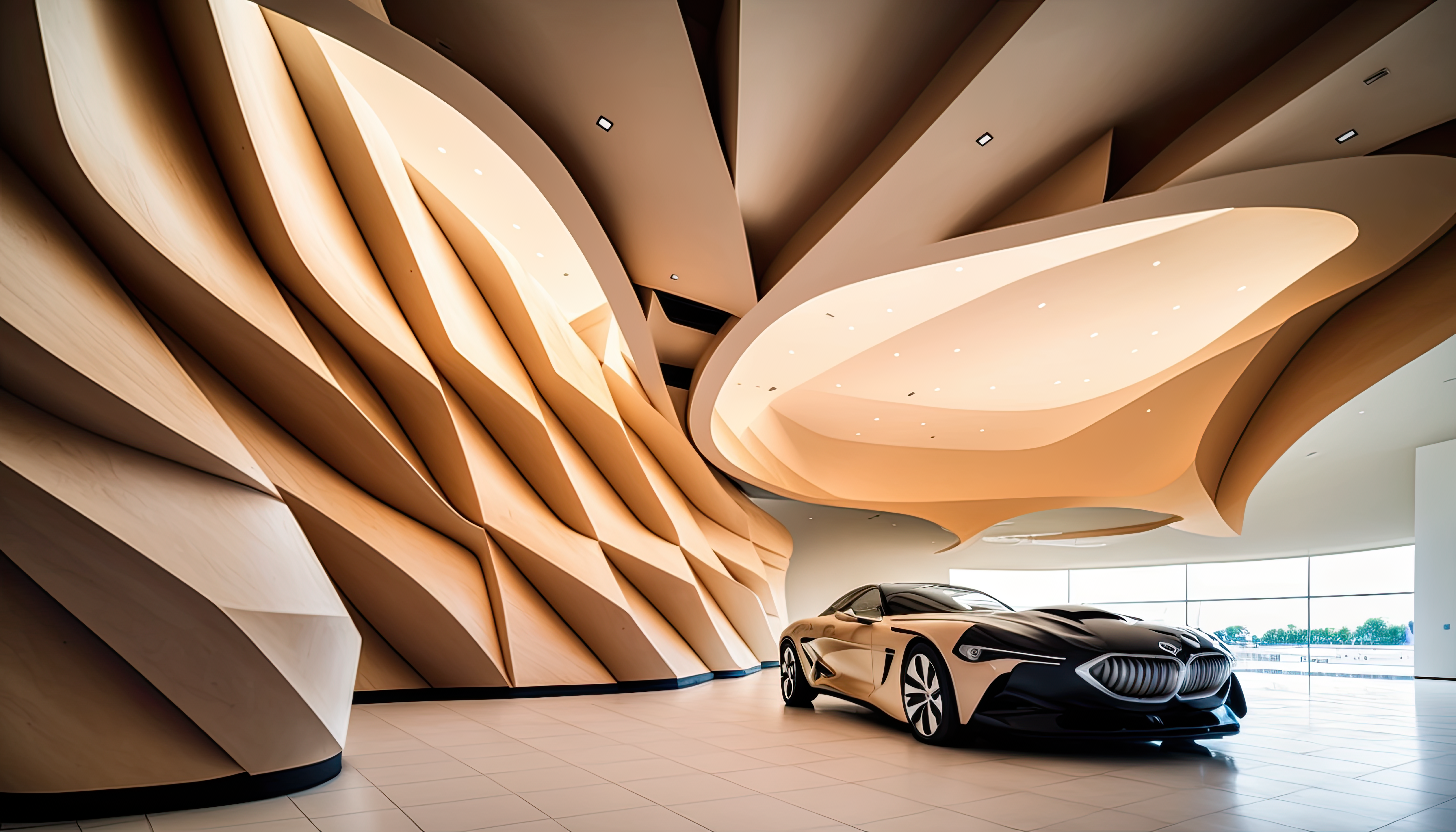
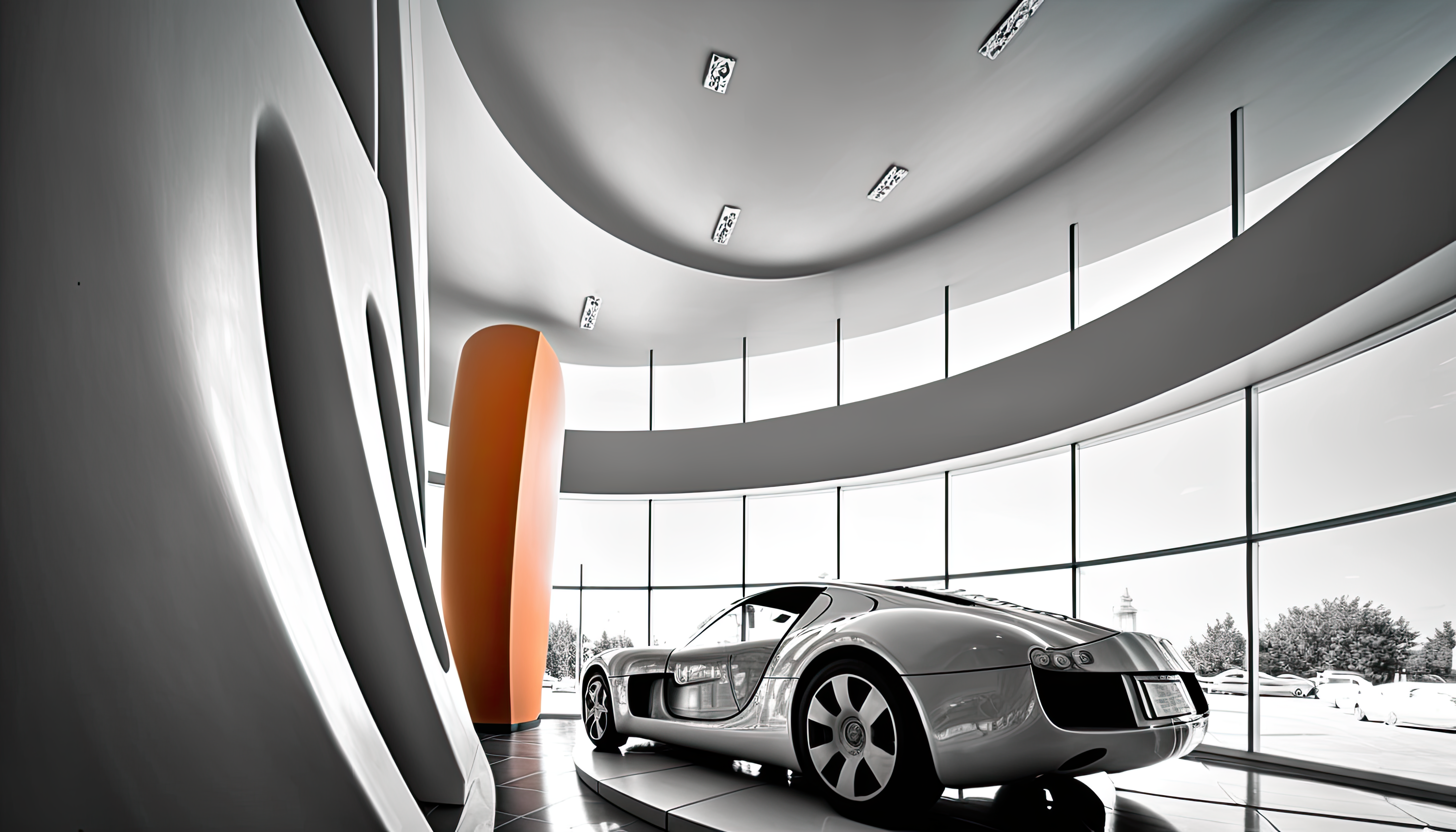
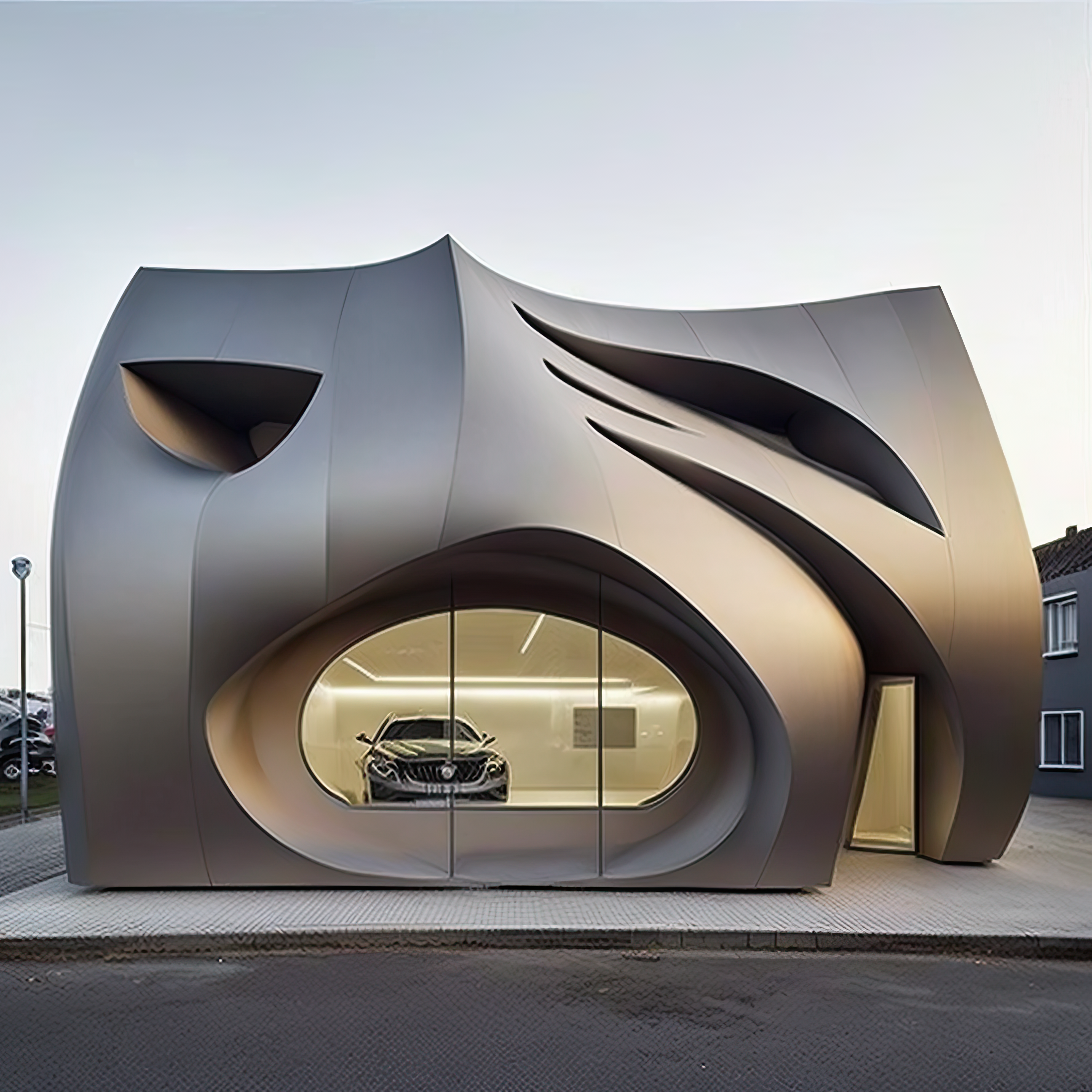
As you can see in these images we are able to achieve any look and feel, any design concept efficiently. But we do have our own style, aesthetics and philosophy of course. In couple with clients’ brand ethos and vision we combine it with our vision and philosophy to achieve stunning results and happy clients.
While AI has significant potential in architecture and space design, the value of human creativity and intuition cannot be underestimated. AI can assist architects in generating and evaluating design options, but it cannot replace the creativity and inspiration that comes from human designers.
Furthermore, design is not just about creating functional and sustainable buildings; it is also about creating spaces that evoke emotions and connect with people. The human element of design is crucial in achieving these goals.
The value of design goes beyond the functional aspects of buildings. Design has the power to shape our environment and influence our behaviour and emotions. Good design can create spaces that inspire, enhance well-being, and improve our quality of life.
In my view, design is not just about aesthetics or making things look pretty. Rather, design is a powerful tool that can solve complex problems and create meaningful experiences for users. Good design can enhance the functionality and usability of a product or service, making it more efficient, effective, and enjoyable for people to use.
Design can also help companies stand out in a crowded marketplace by creating a unique brand identity that resonates with their target audience. By understanding the needs and preferences of their customers, designers can create products and services that are tailored to their specific needs, preferences, and lifestyles.
At LKDN, we believe that design is an integral part of the product development process. By involving designers from the very beginning, we can ensure that the product or service we create is both functional and beautiful. We strive to create designs that not only look good but also work well, making people's lives easier and more enjoyable.
Ultimately, the value of design lies in its ability to create meaningful connections between people and the products and services they use. It can help companies build brand loyalty, drive sales, and enhance the overall customer experience. As a design-driven company, we are passionate about using design to make a positive impact on the world and create solutions that people truly love.
The idea of machines replacing human designers and artists is still far from reality. While AI can assist in generating and evaluating design options, it cannot replace the creative and emotional intelligence that comes from human beings.
Moreover, art and design are not just about creating functional and efficient solutions; they are also about creating emotional connections and evoking responses from viewers. These aspects require human creativity and intuition, which cannot be replicated by machines.
Midjourney is an AI digital art and design platform that uses machine learning like Neural Networks to create images using text descriptions - prompts. We have been using Midjourney since its appearance about a year ago along with other tools such as Stable Diffusion, Dalle-2, Dream by Wombo, etc. We started experimenting with it first from creation of artworks and then continued using it in some design test, and further started incorporating it into our daily design workflows on our Art and design projects.
The following AI images are our R&D experiments with Midjourney which we usually do in our studio for future projects:
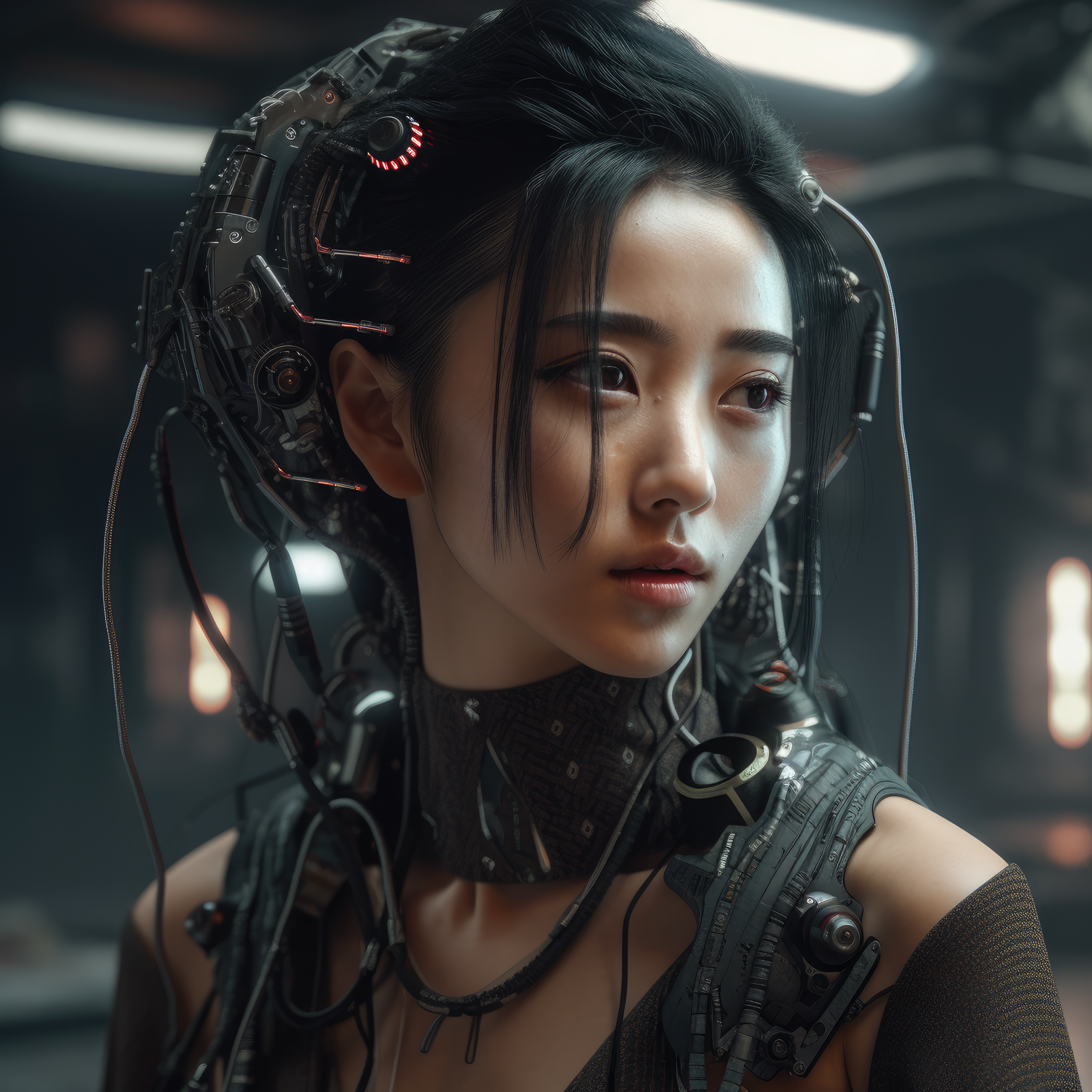
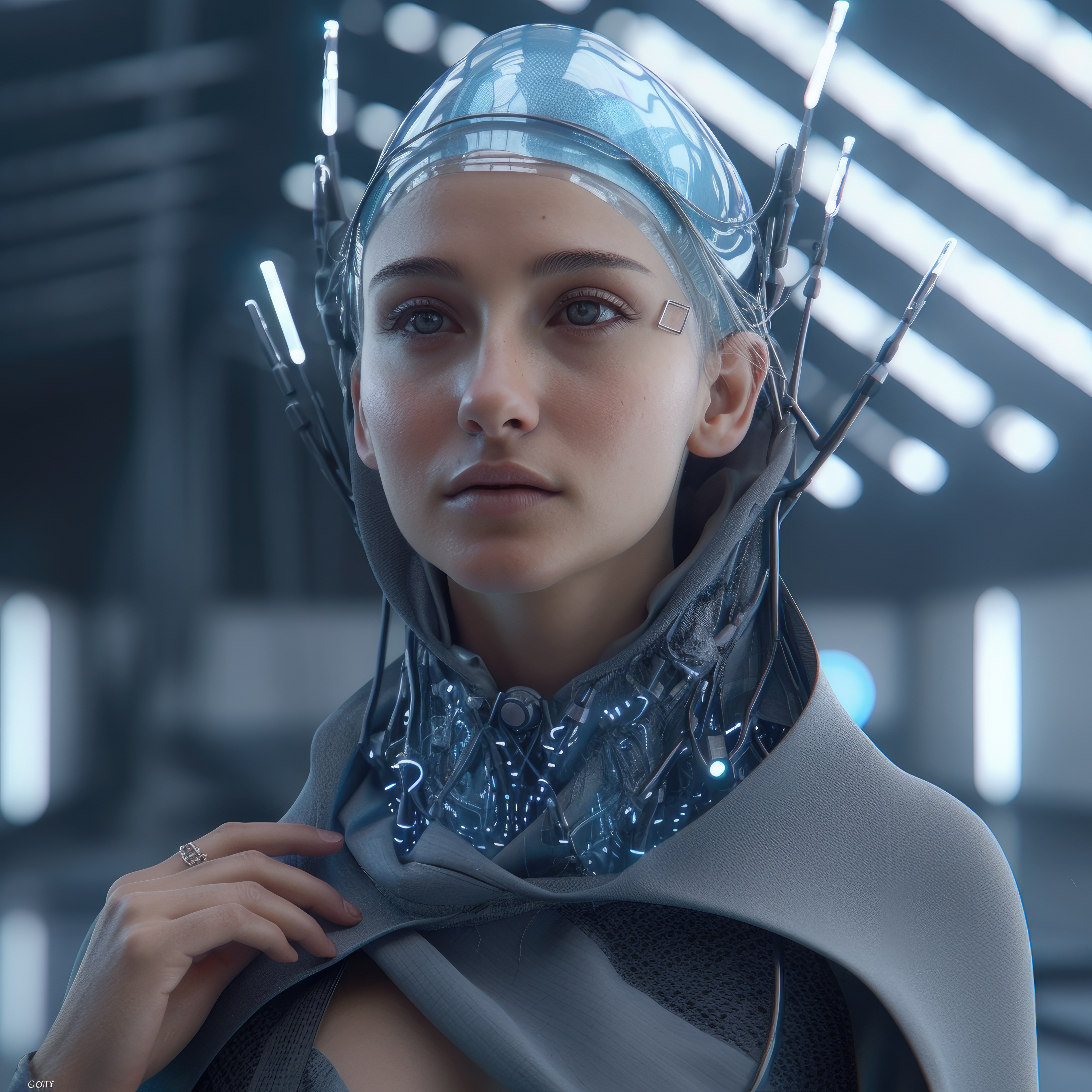
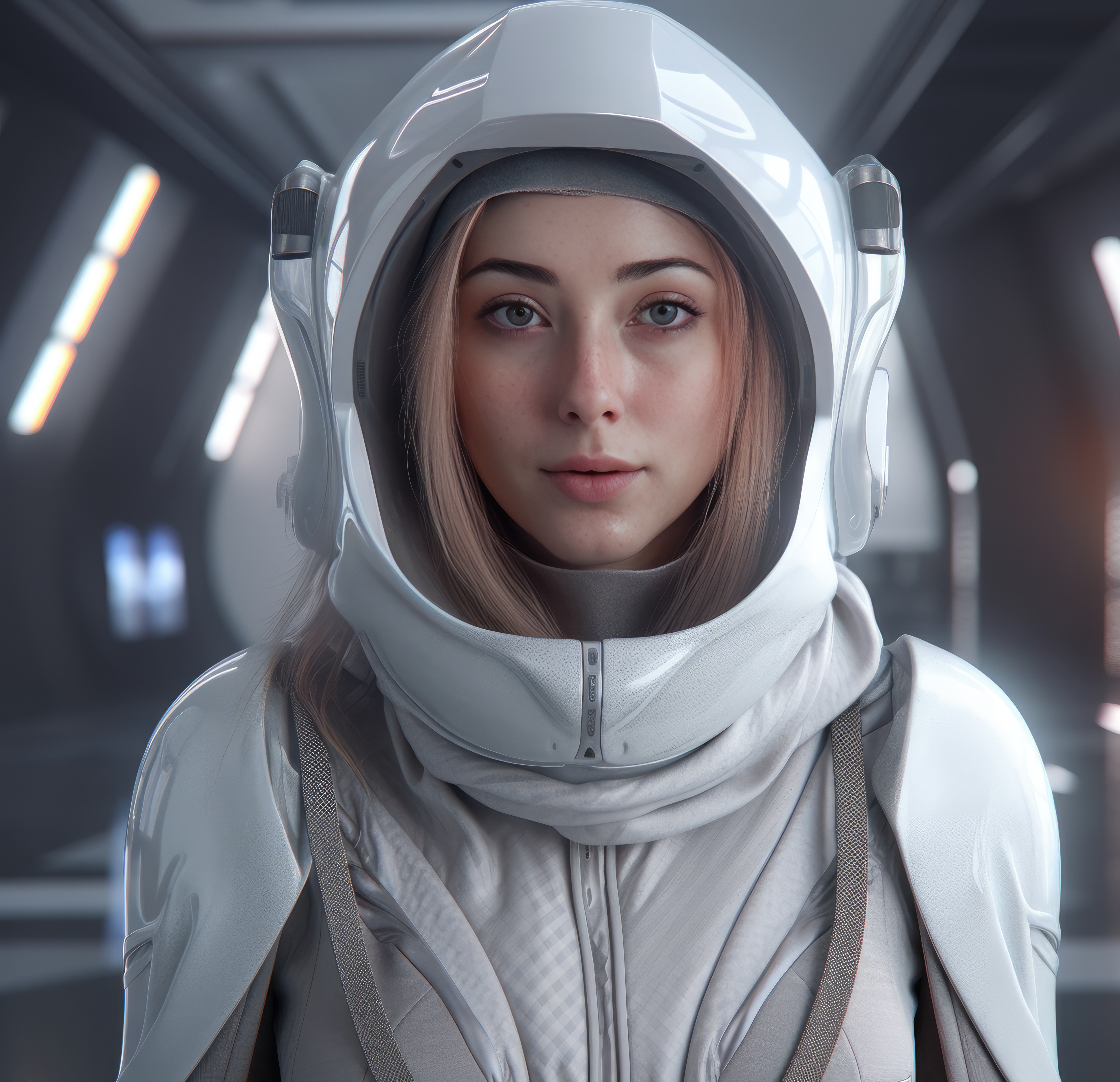
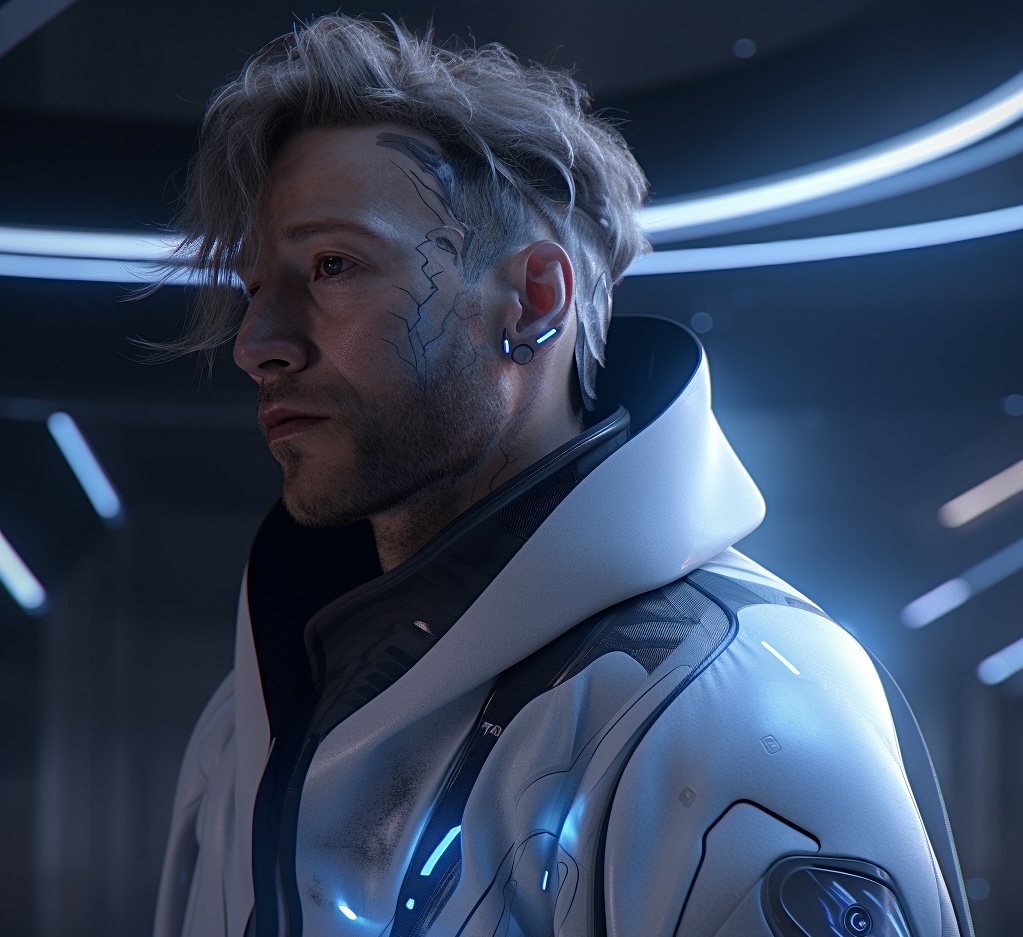
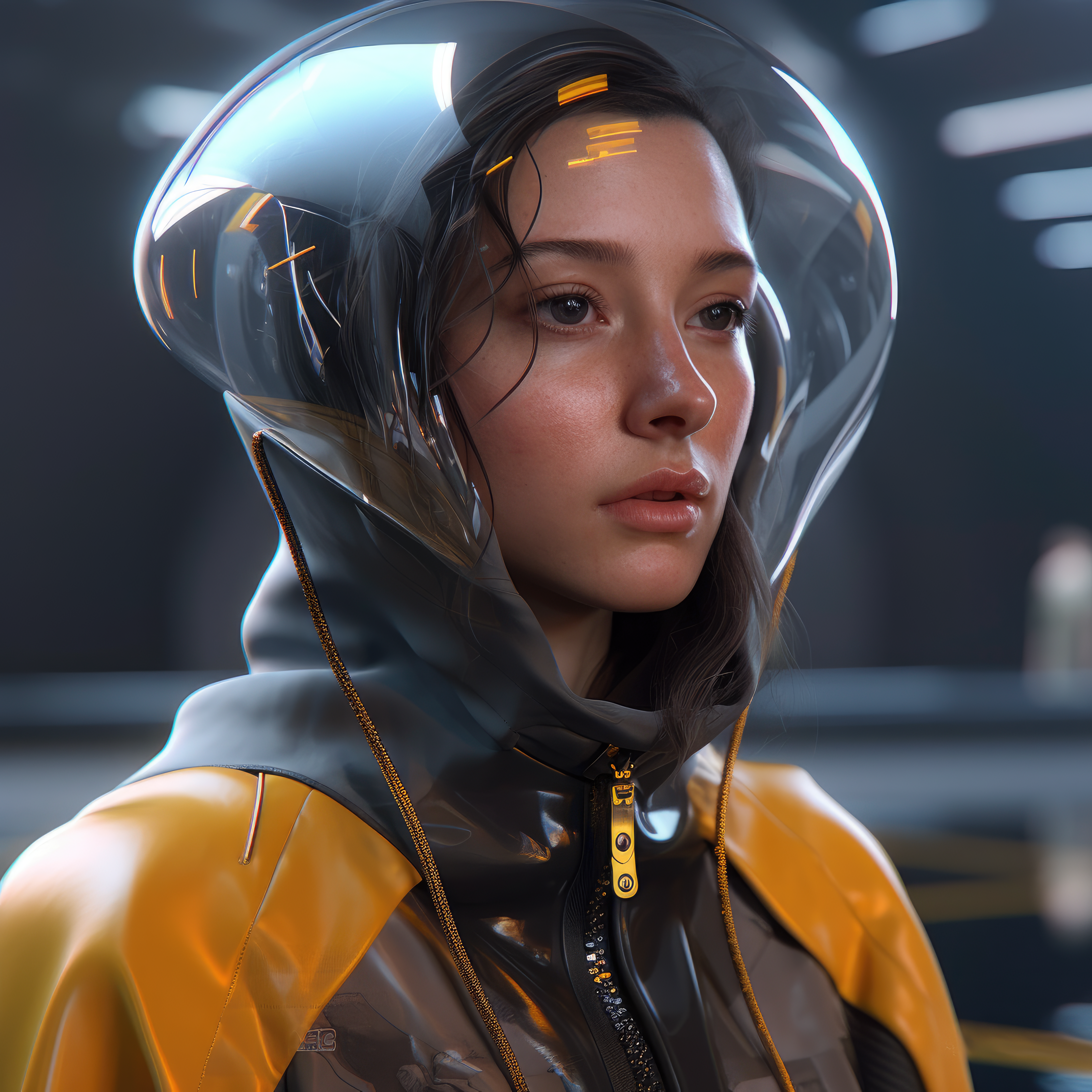
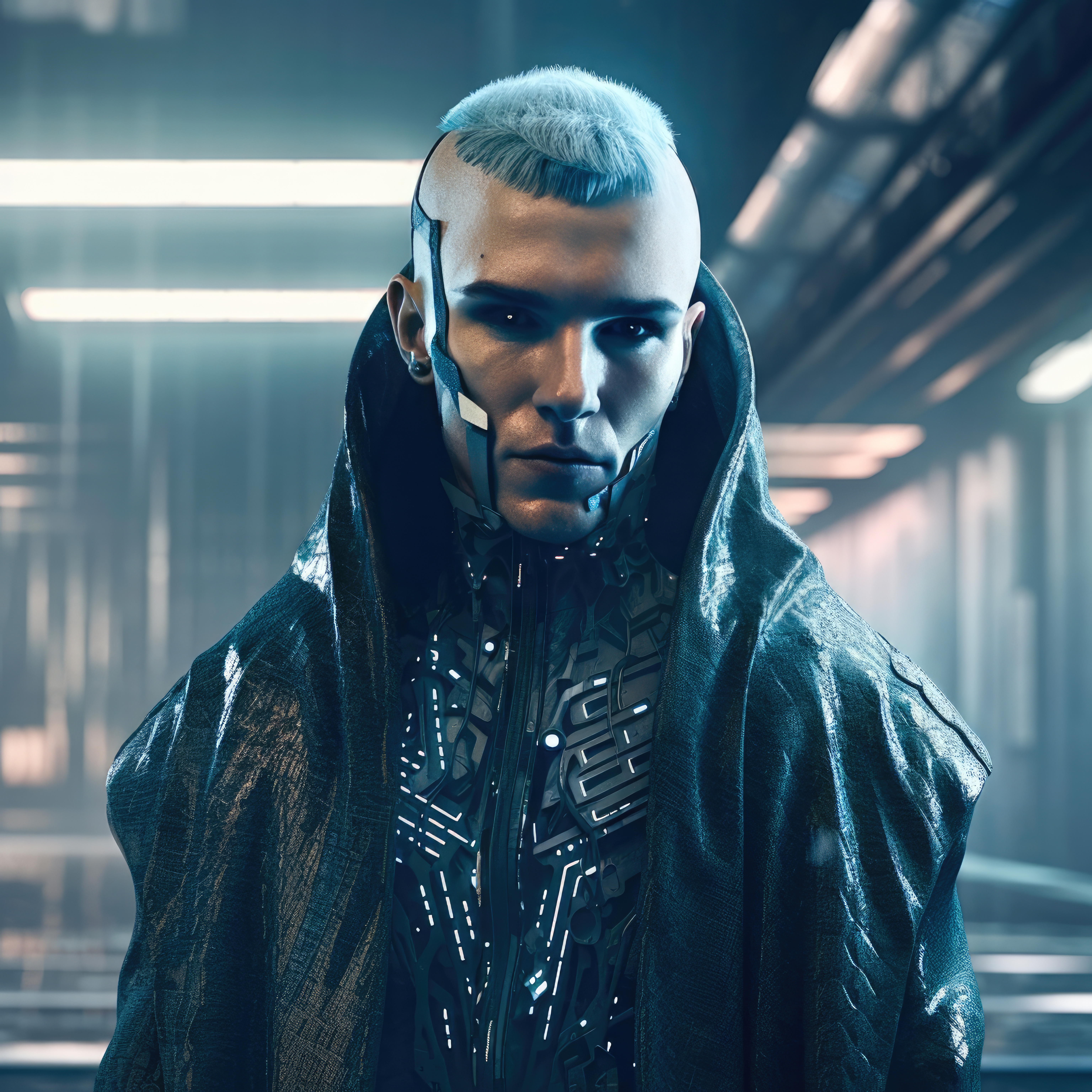
These people do not exist, and we generated them using Midjourney V5 to test our workflows for creating futuristic real-looking avatars for our Metaverse. What we tried to achieve here apart from the realism of the avatars is the vision of the future of fashion and technology merged. Our studio was always involved in many fashion design projects. And in this research, we wanted to layer several AI algorithms and functionalities such as text-to-image and voice-to-video, and using our real voices of our colleagues integrated into these avatars so they can not only be static but also dynamic talking to us and saying with any voice required information that we input to them. This will come very useful when we start integrating these realistic and beautiful looking avatars into the virtual worlds of Metaverse. Such applications like representing brands and companies on Metaverse being a face or an image of a brand to talk to Metaverse users, onboarding them into the company’s Metaverse, explaining them rules of the Metaverse world, and showing them around the virtual world of the company.
While the technology behind Midjourney and other similar tools is impressive, it cannot replace the creative and emotional intelligence that comes from human designers and artists.
Midjourney may be able to simulate certain aspects of creativity, it is ultimately a tool that is created and controlled by humans. As such, it is limited by our own biases, experiences, and perspectives. Additionally, there is a certain intangible quality to human creativity that cannot be replicated by even the most advanced technology.
In conclusion, AI has immense potential in architecture and the metaverse, but the value of human creativity and intuition cannot be understated. AI can assist architects in generating and evaluating design options, but it cannot replace the emotional intelligence and creativity that come from human beings. As we move forward, it is essential to find the right balance between the use of AI and the human element in art, design, and the metaverse.
Project credits:
Swarm Art Pavilion for Power Station of Art
Design Credits: LKDN Metaverse, Moon Architects
Image credits: LKDN Metaverse
Year: 2022
